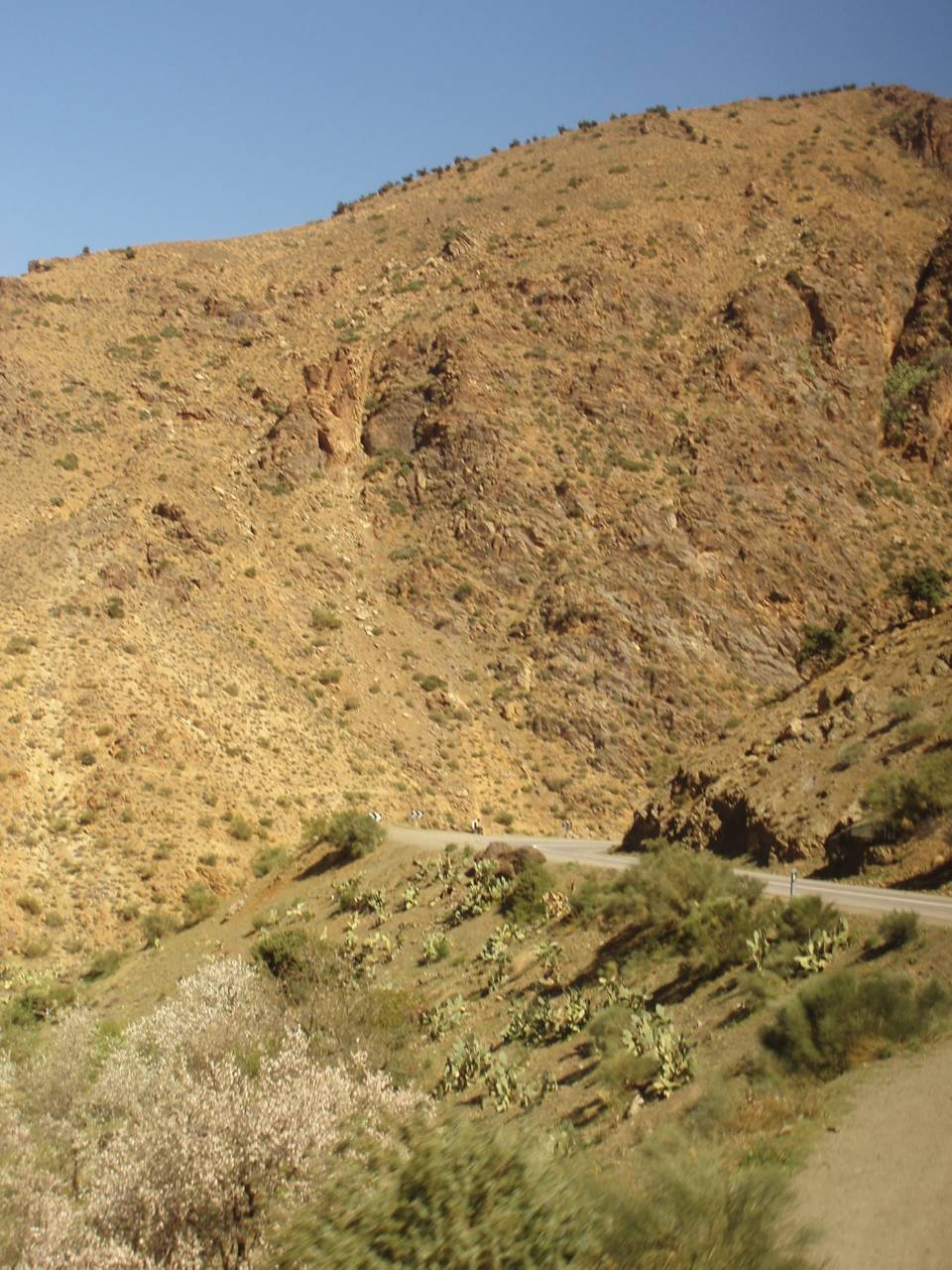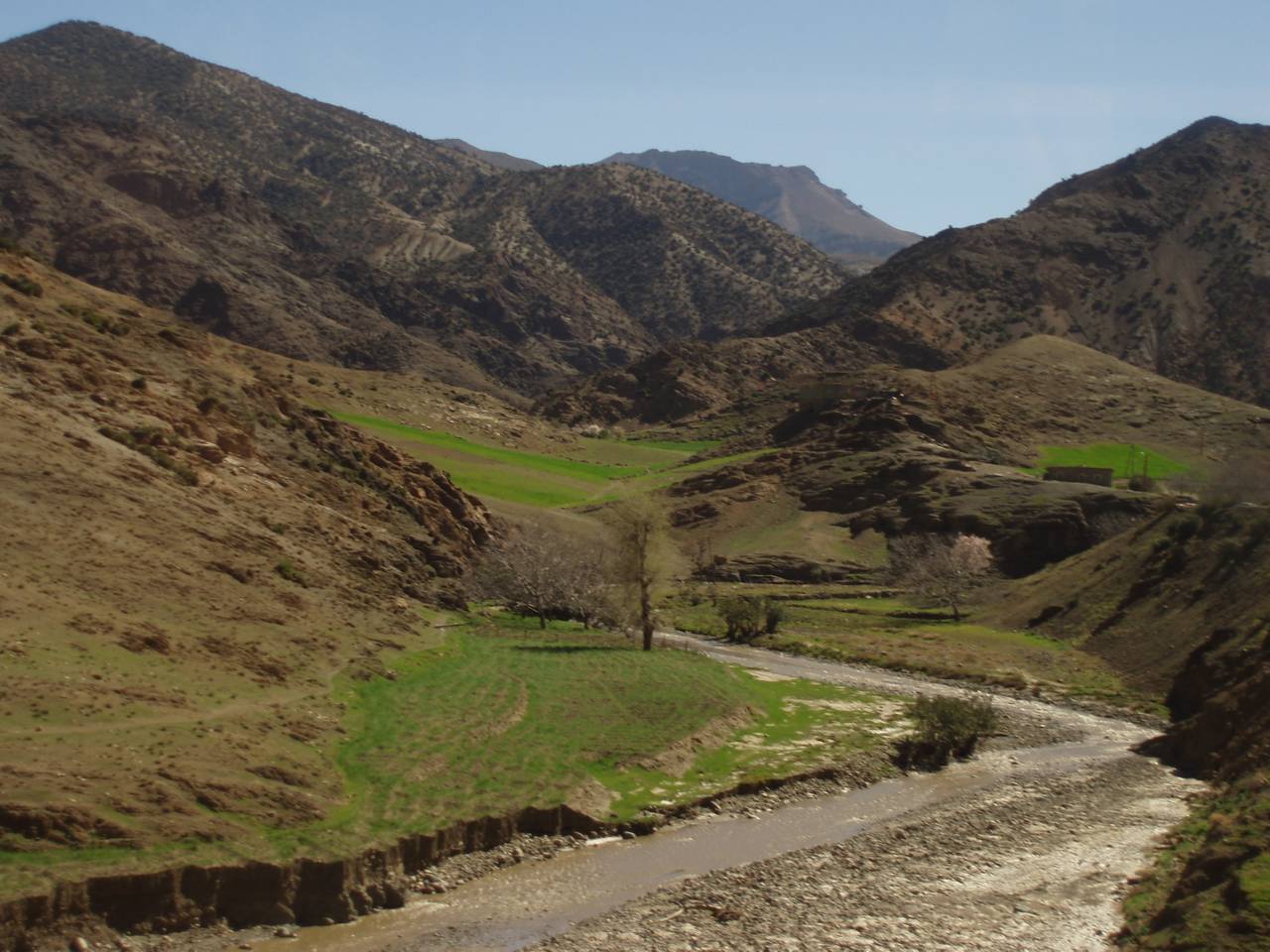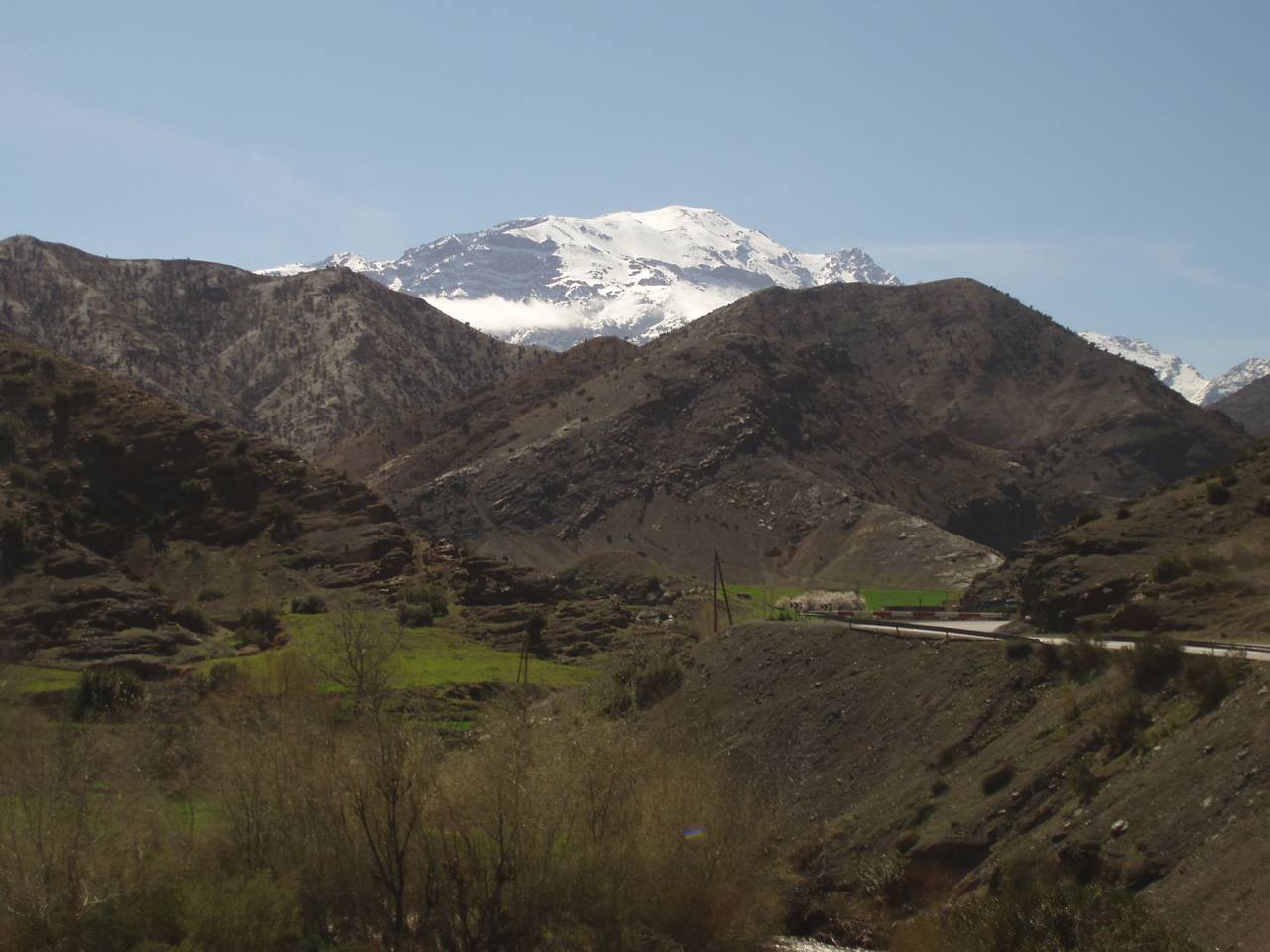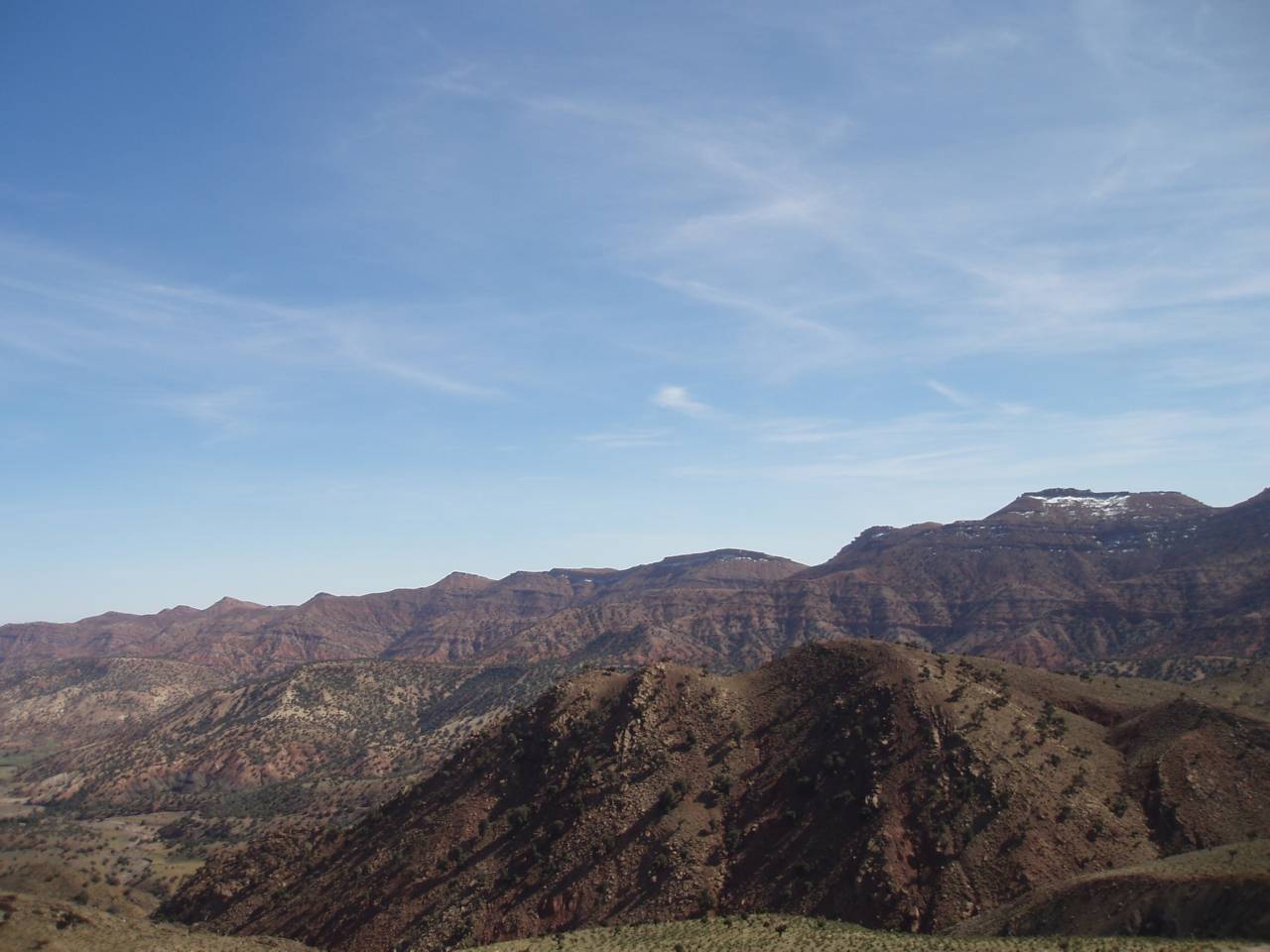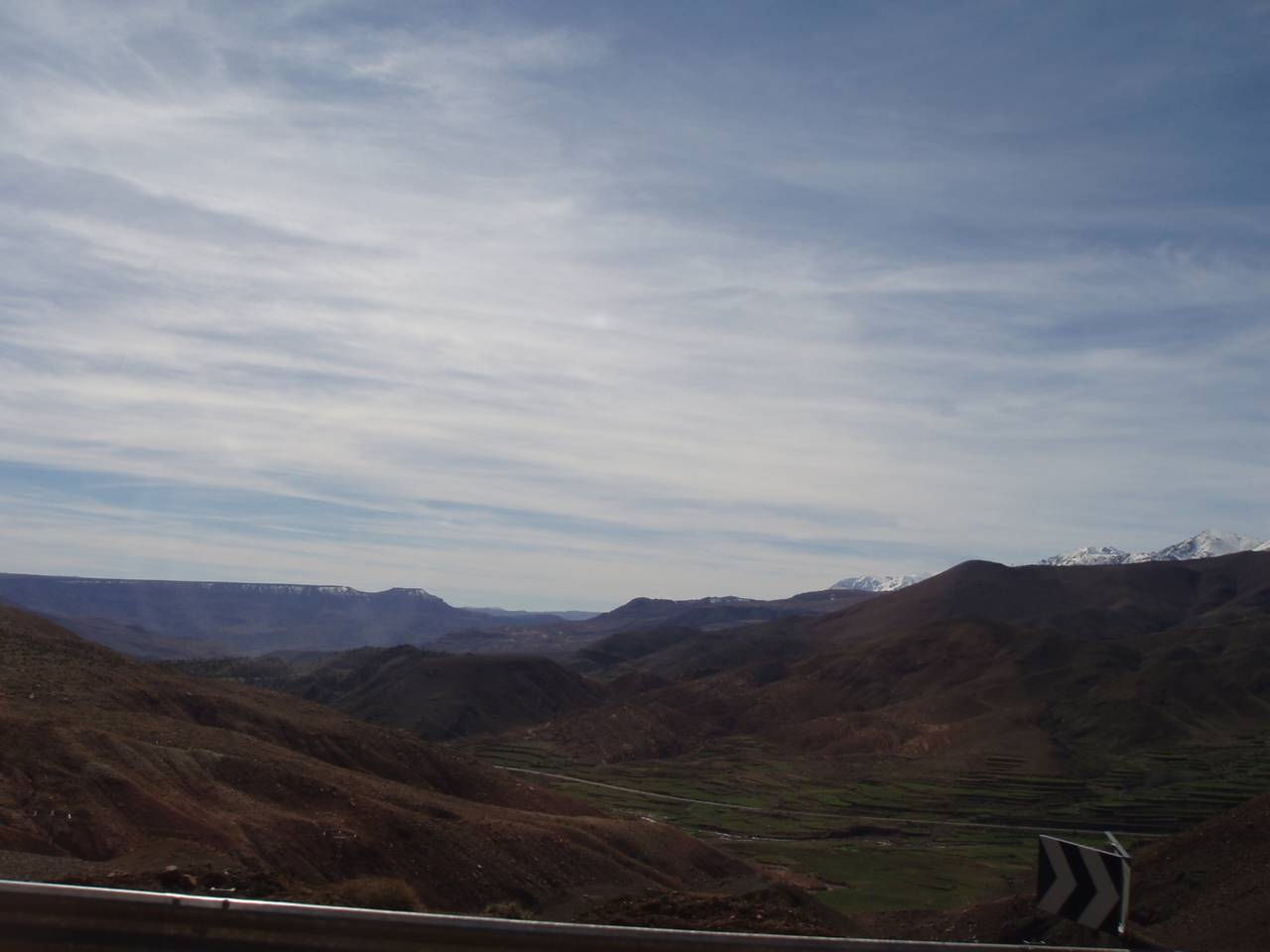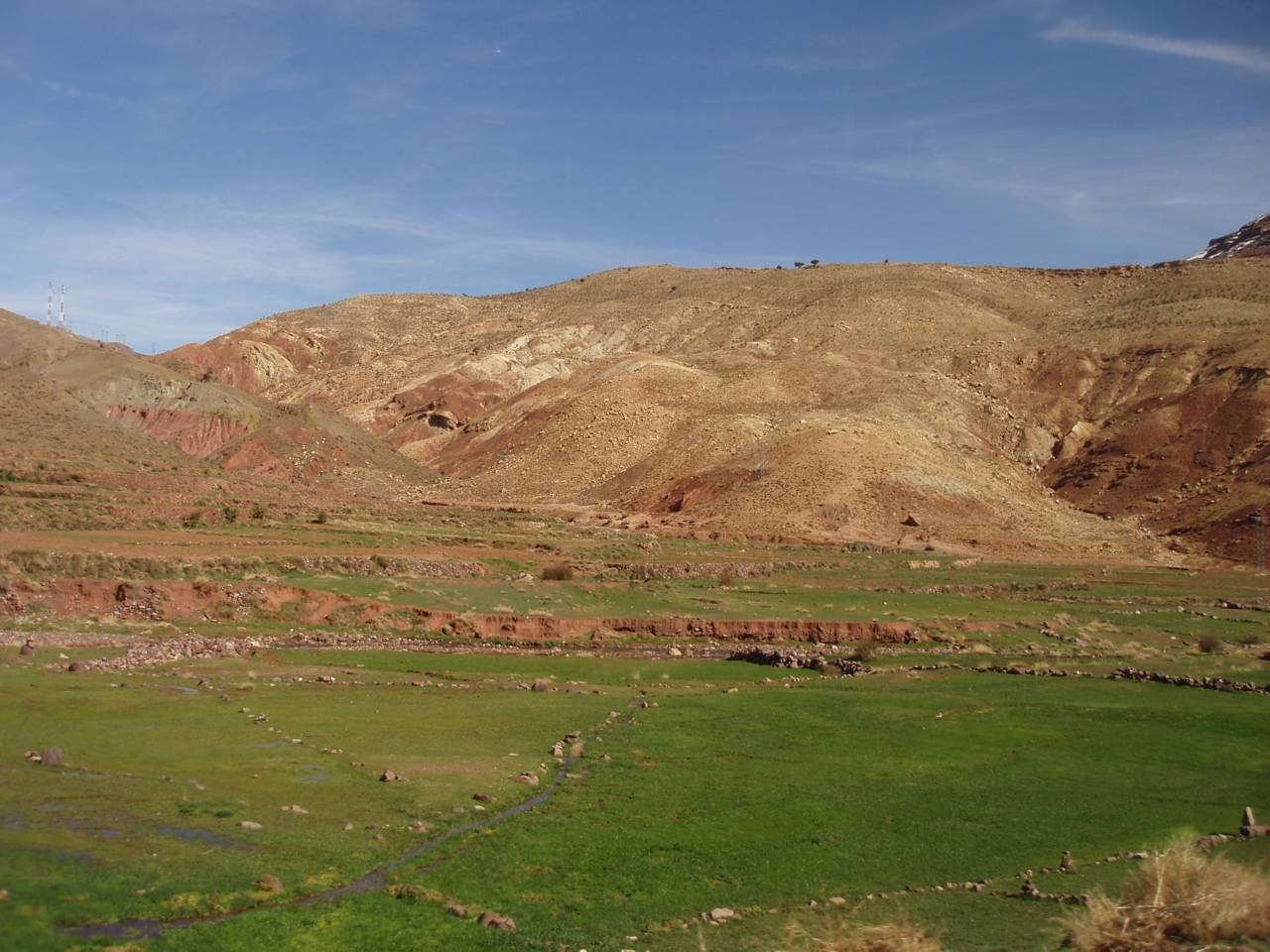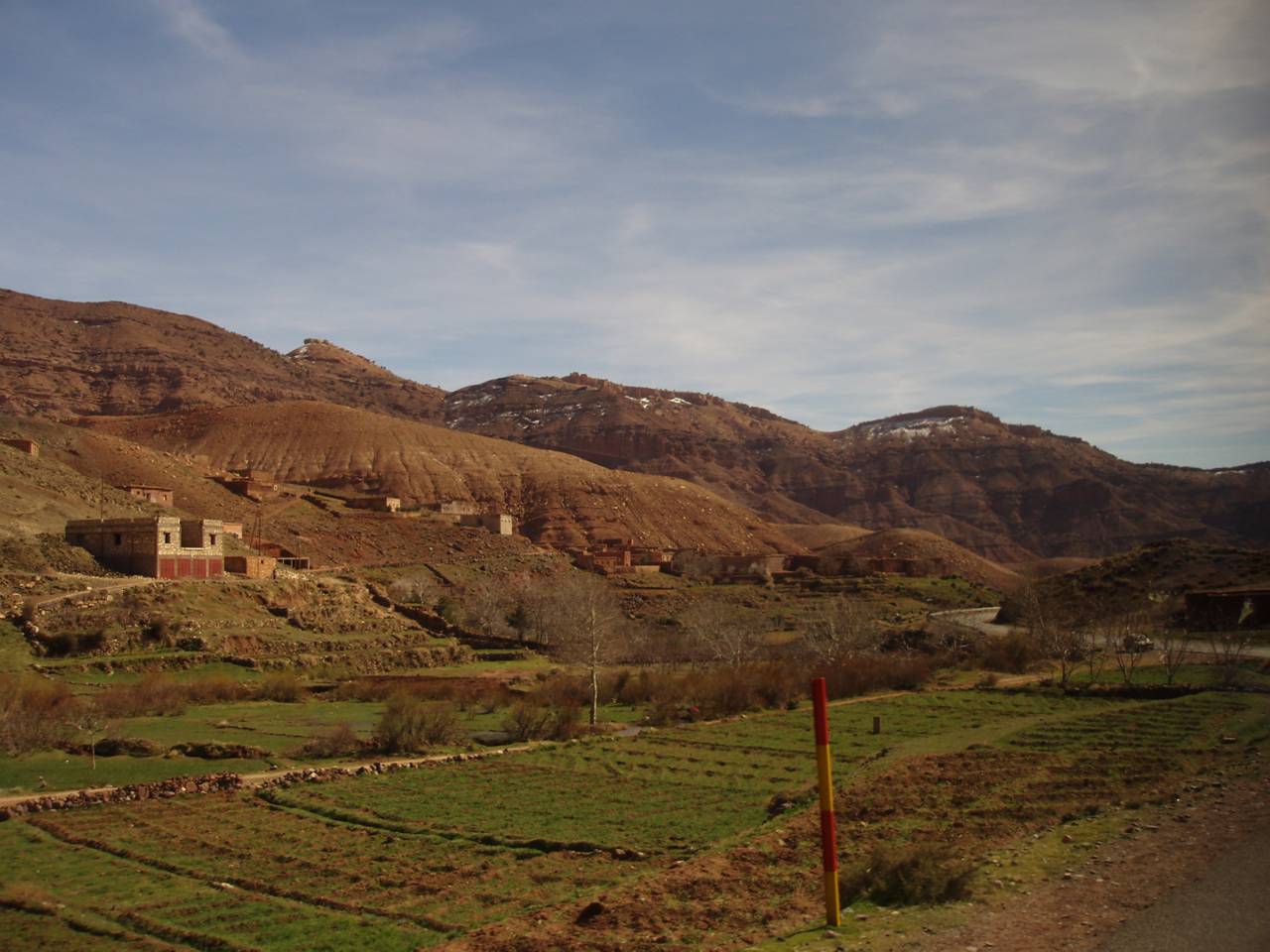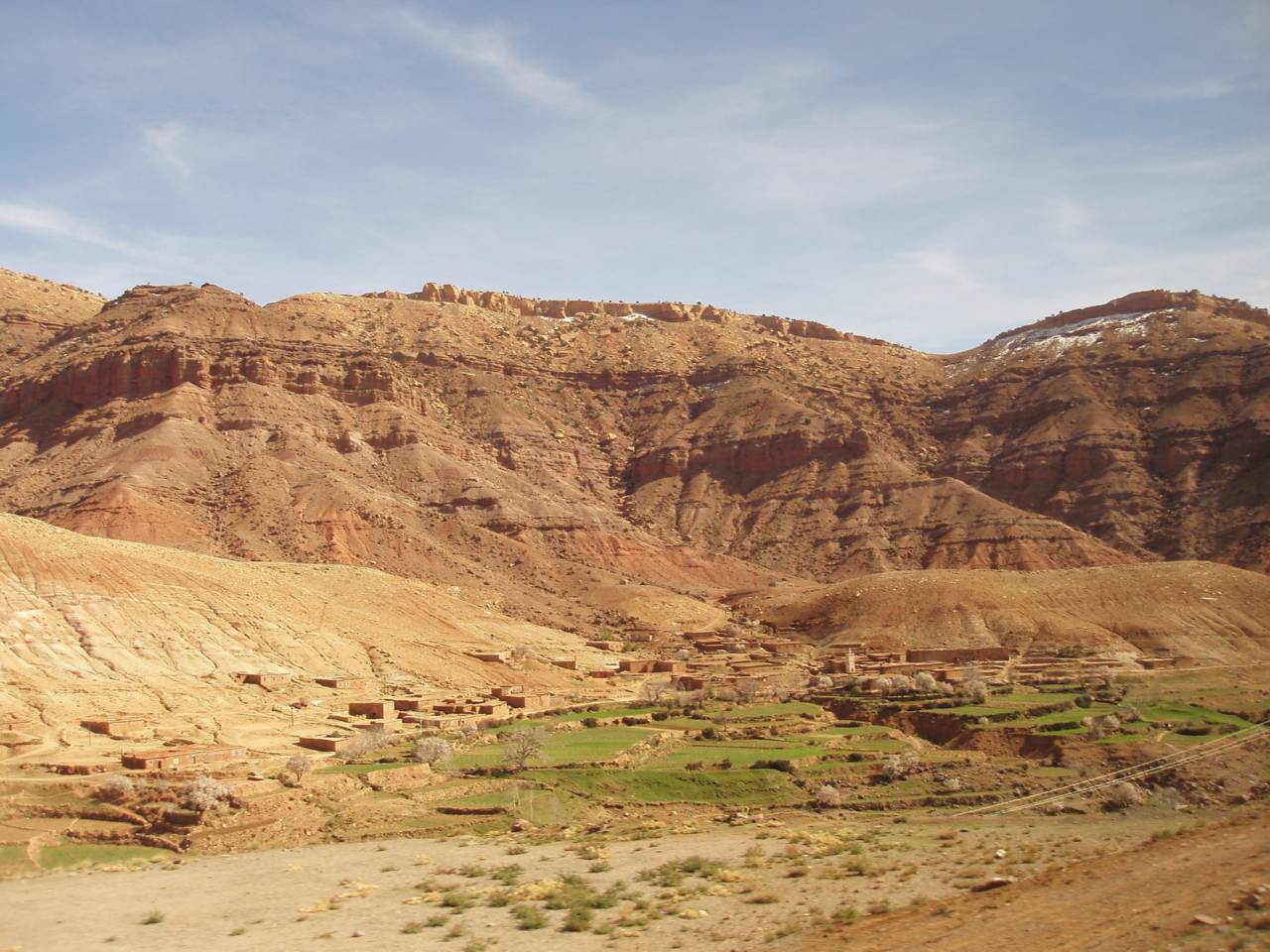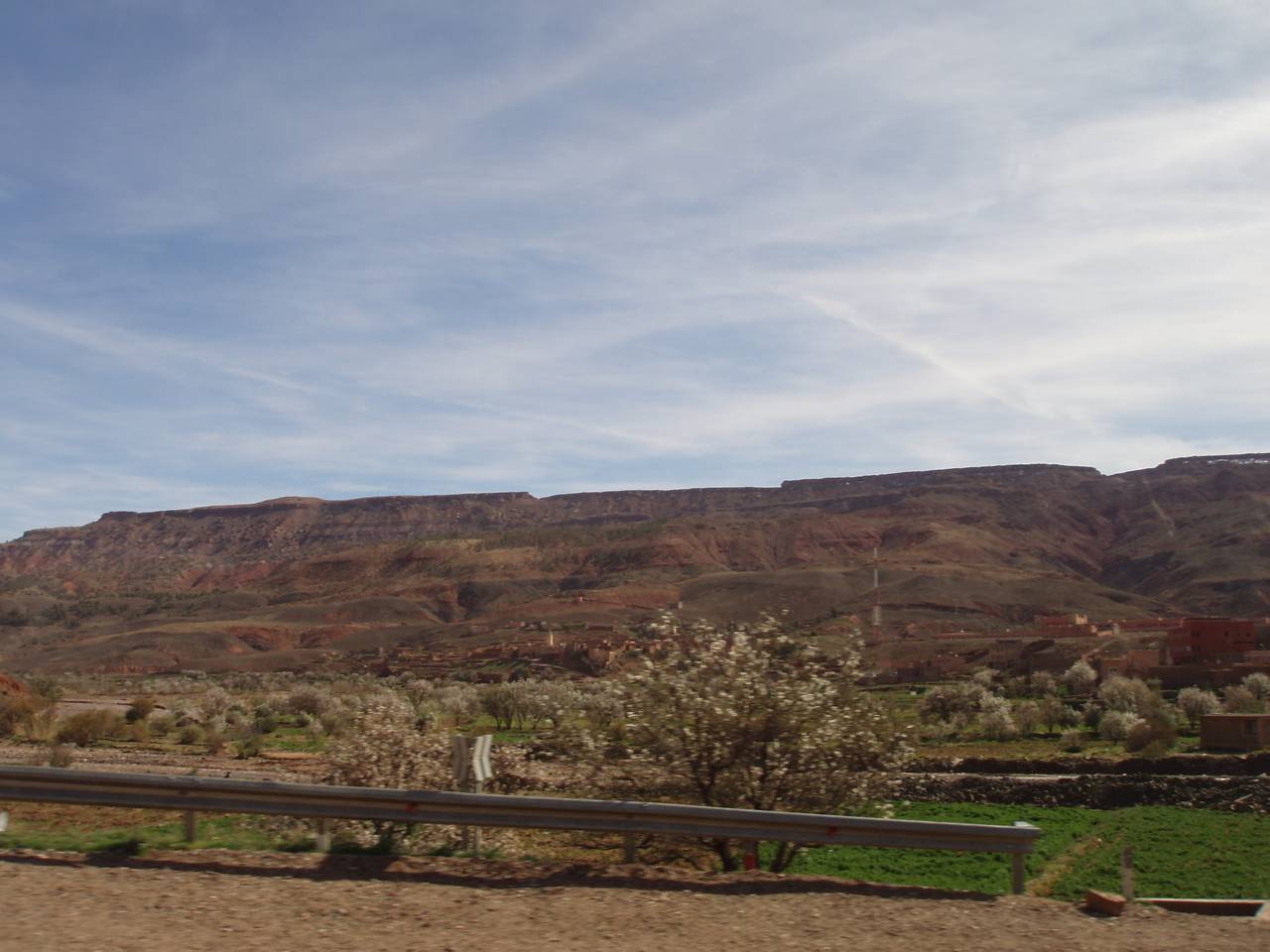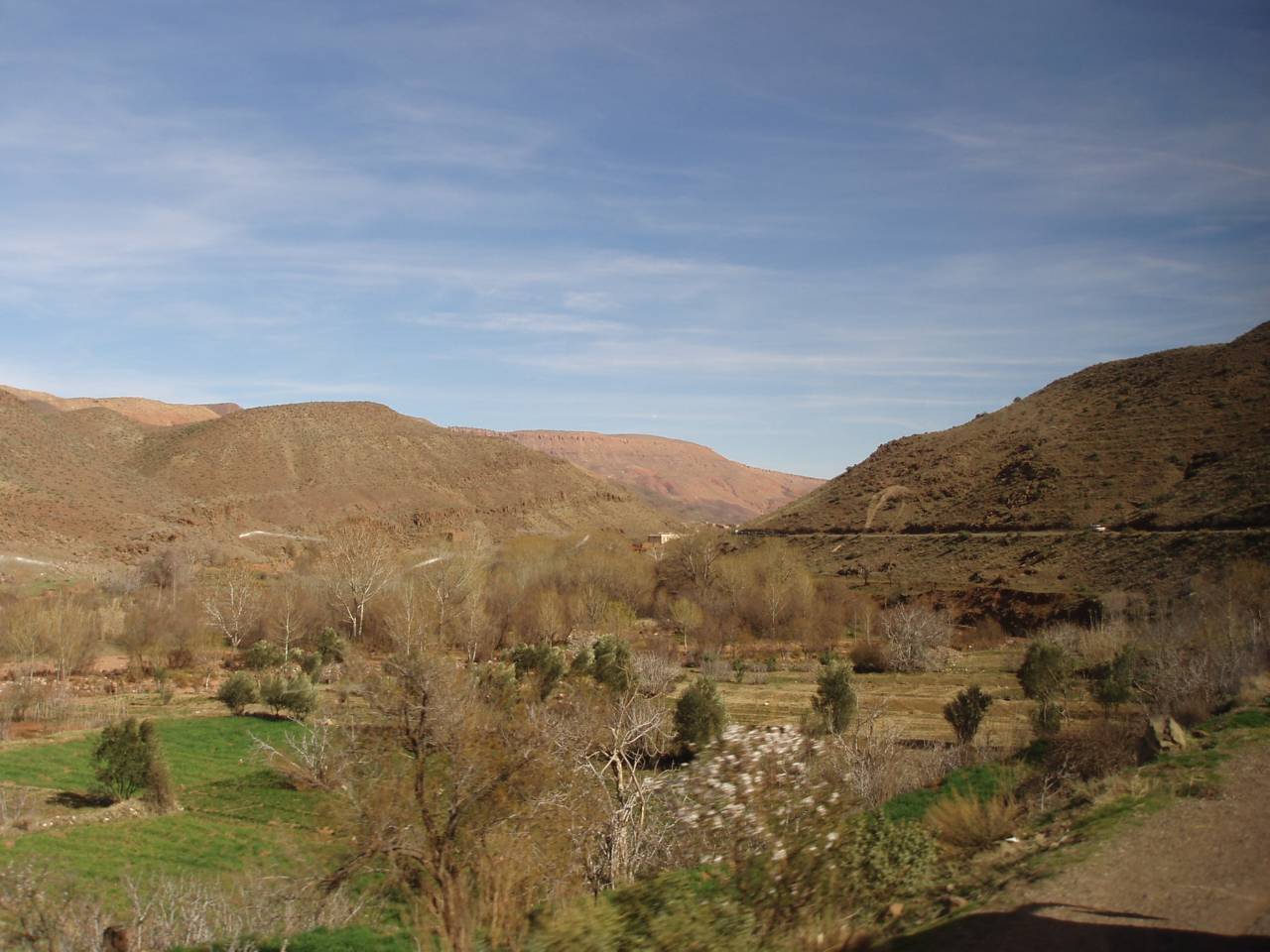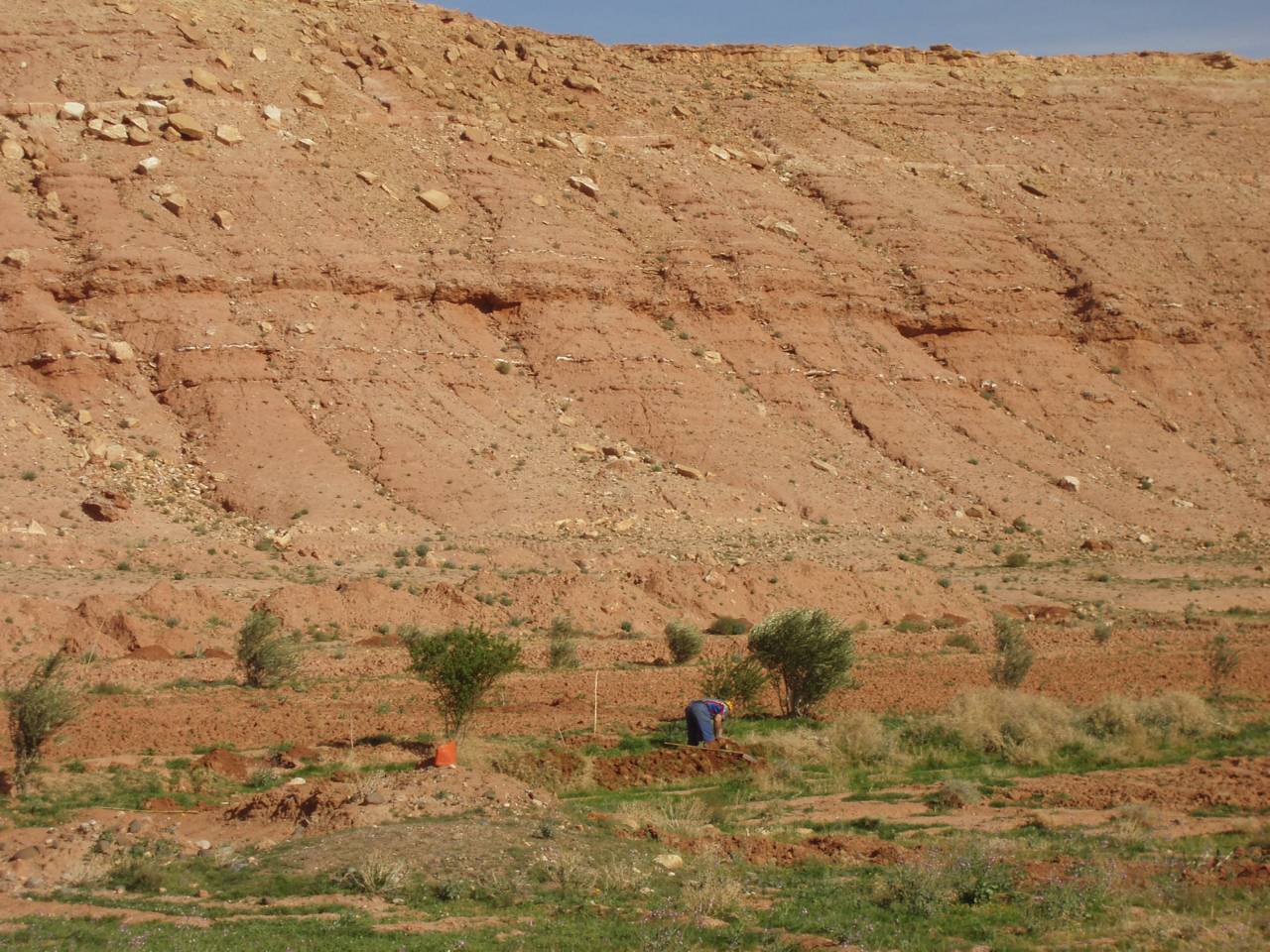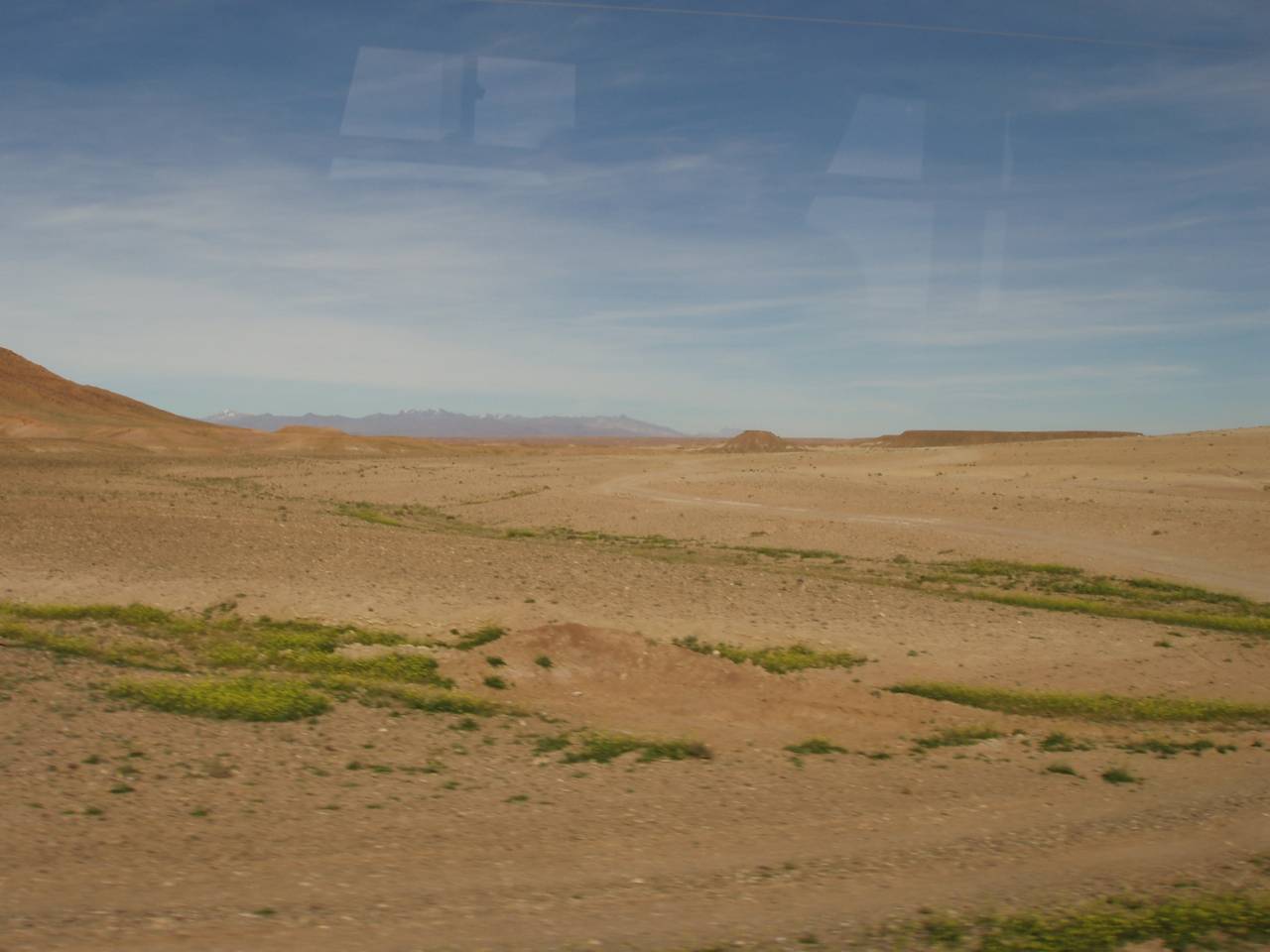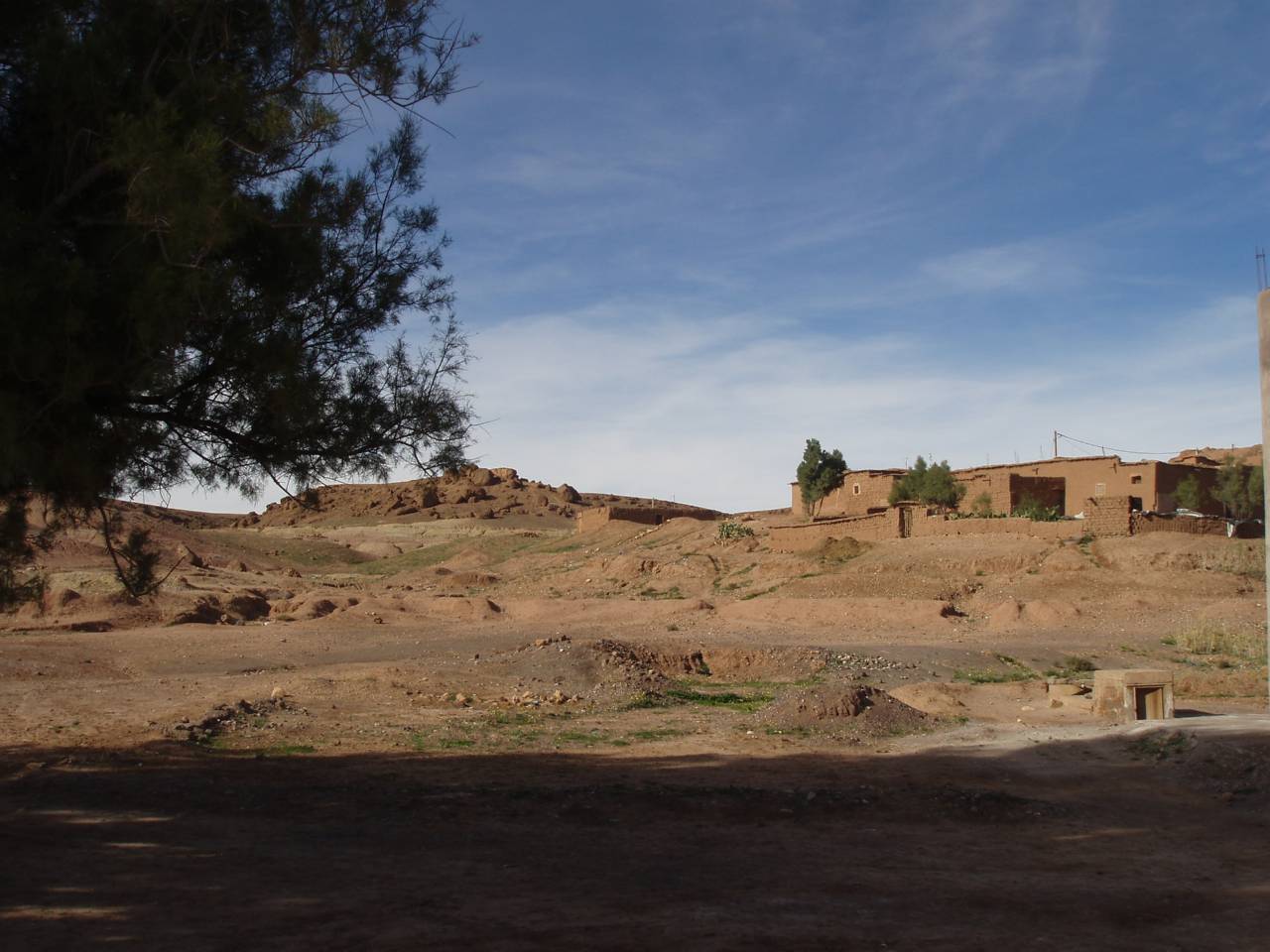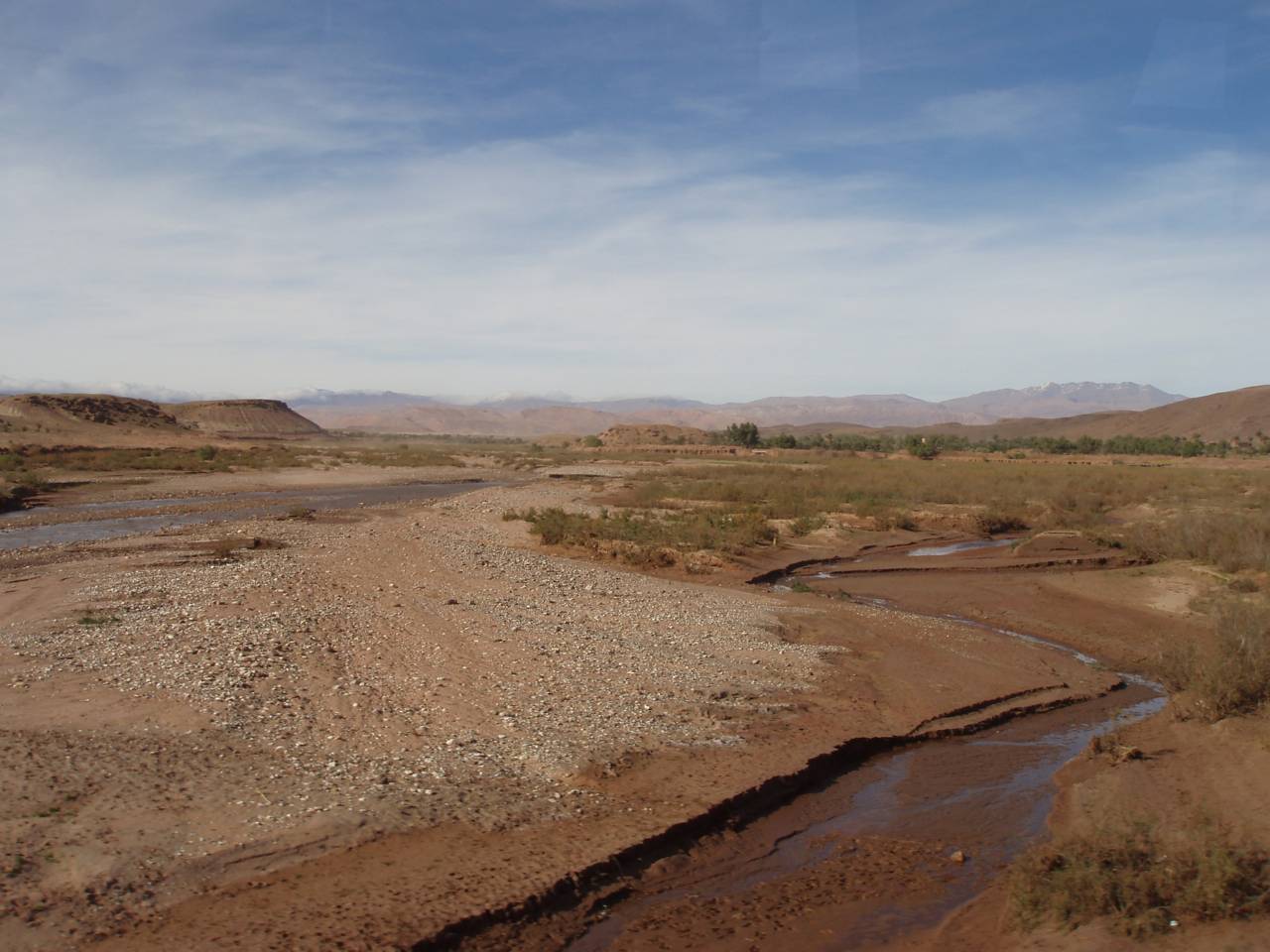Diary Entry
We decided to take the bus at 9 a.m. so that we could still have half a day in Oarzazate and have the opportunity to get to know the city. In our hotel in Marrakech we get up early and pack our things. Unfortunately, at half past seven there is no one at the reception, so we go to have breakfast first. When we come back shortly after 8, the reception is still unmanned. I grabbed the cleaning lady, who lives in a small “room” or a closet under the stairs with her dog, but who is already hard at work. Simply handing over our keys wouldn’t be a problem, but our hostess was the only one in Morocco who insisted on keeping a passport.
The cleaning lady gets nervous because I’m angry and she’s afraid I’ll take my anger out on the boss on her. She says the hotel owner usually doesn’t come until around 10 o’clock. And unfortunately the cleaning lady doesn’t have the key for the compartment where the boss could have put the passport either. Well fine!
Since we have no other choice, we wait on our balcony and watch the hustle and bustle on the Djemma-e-Fna increase like every morning. Time passes slowly, but at some point it is 10 o’clock. But the lady of the house is still nowhere to be seen. It was almost 11.30 am before she finally came to the hotel with a few shopping bags. I’m foaming with anger, but save my strength to get to the bus station as quickly as possible, where the next bus is supposed to leave at 11:00 sharp. It’s a good thing that we stayed flexible and haven’t bought any tickets yet.
I have my passport. Let’s go!
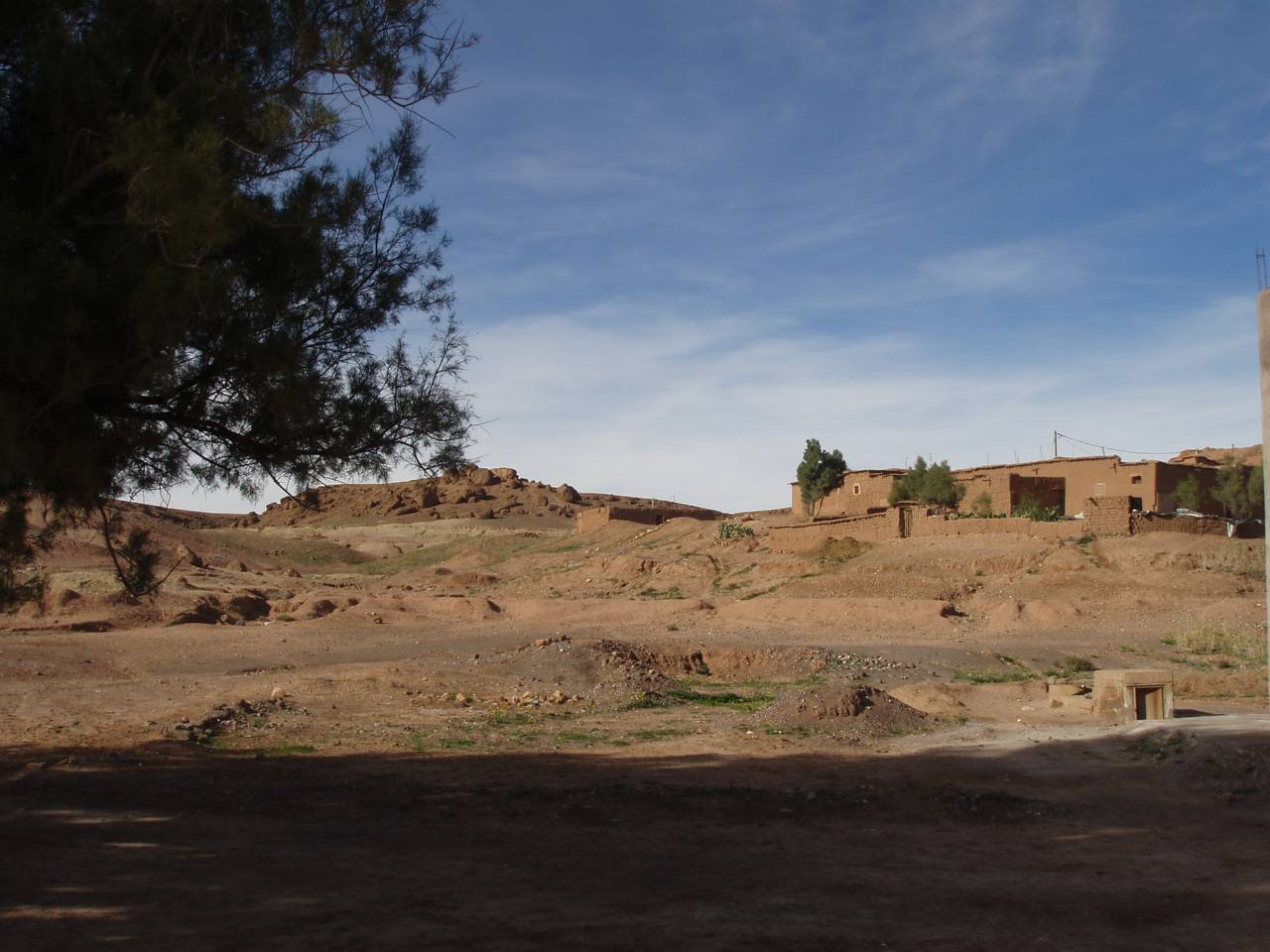
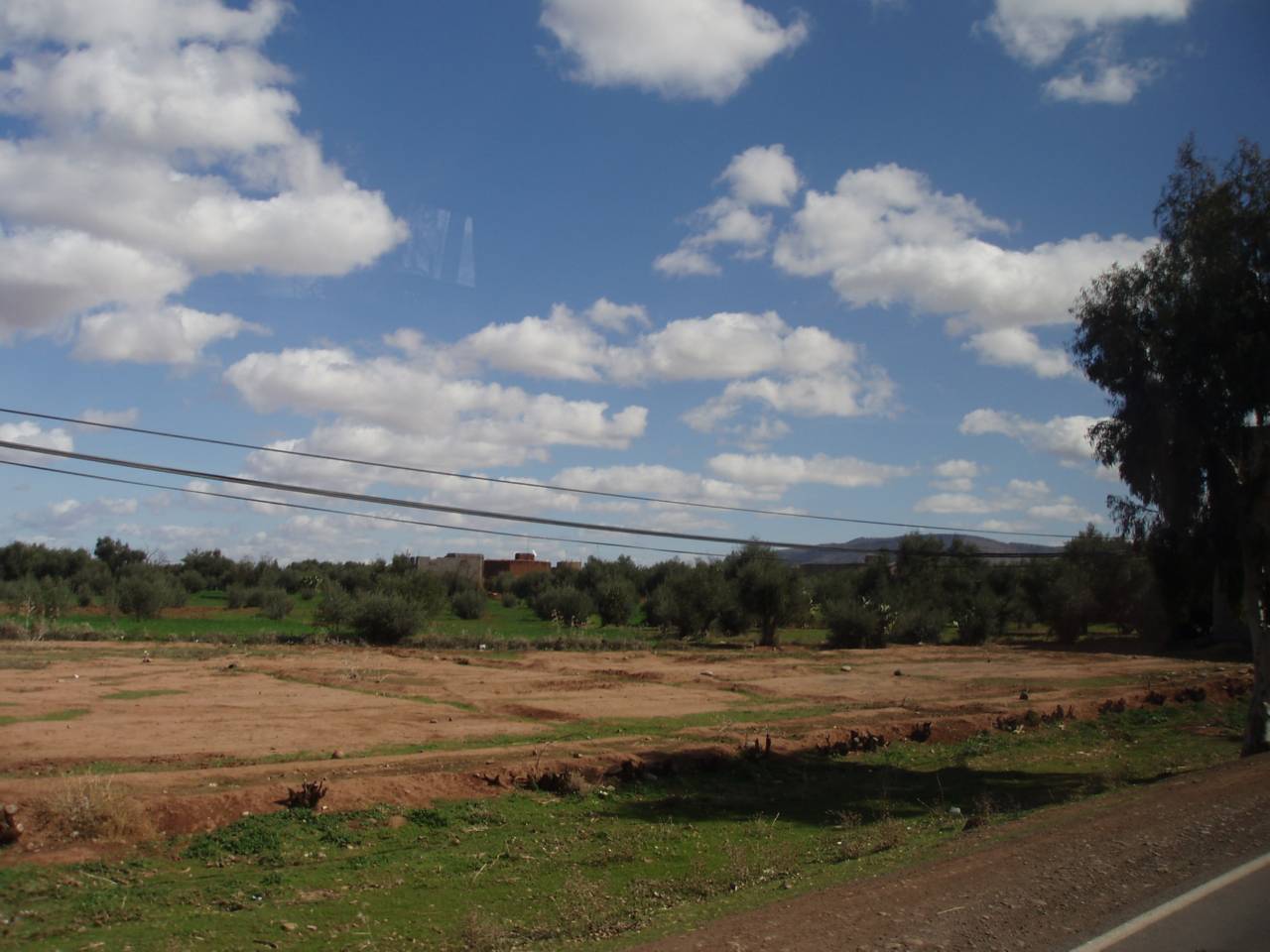
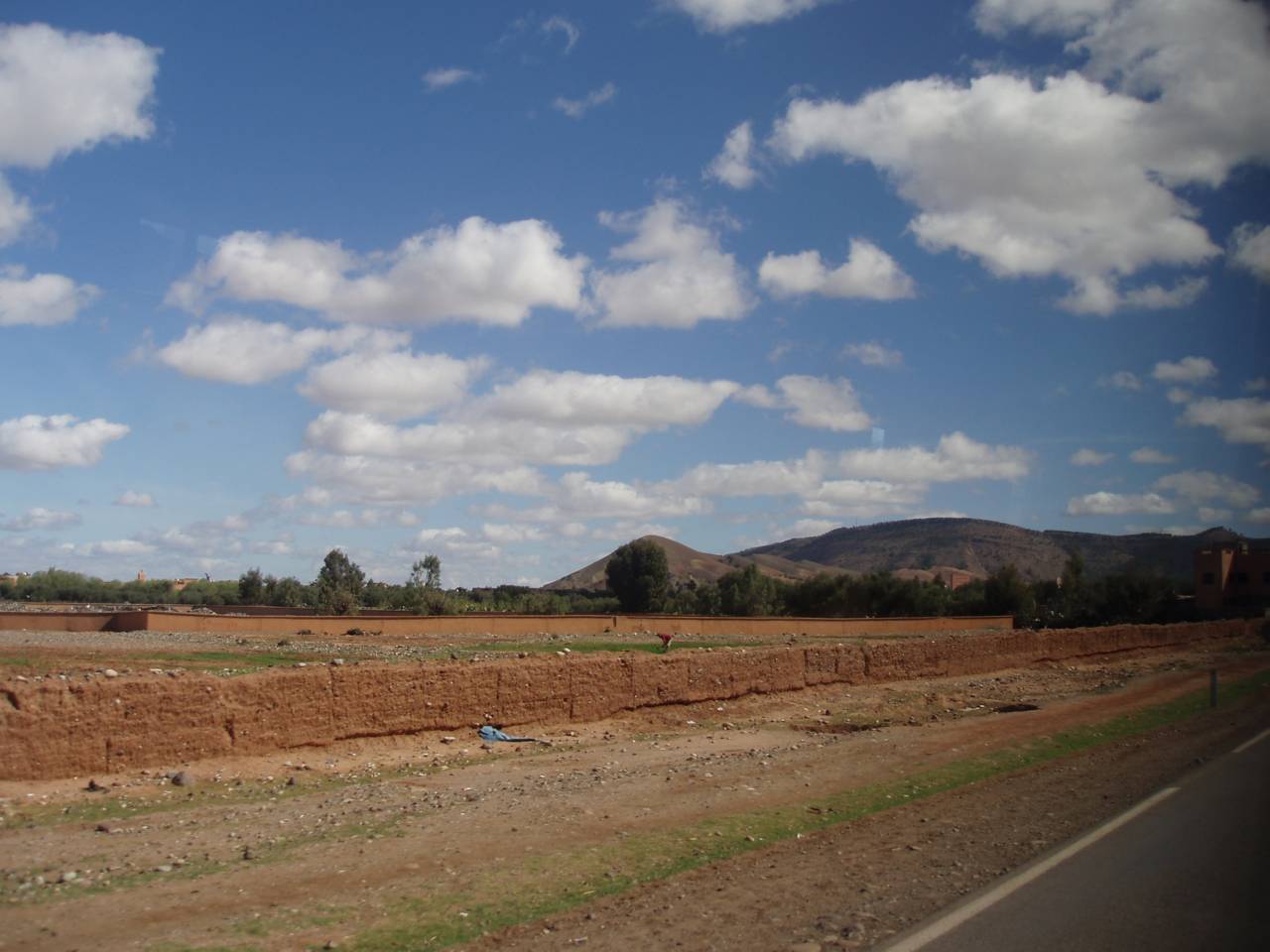
As before, countless people rushed at us at the train station, wanting to send us everywhere. Su and I brush them off until we’re in front of the counter on the line that goes to Ouarzazate every hour. People smell their business and cash in on us. Above all, they use their proven principle of rushing again. The bus is scheduled to leave in 5 minutes, so we are taken there immediately with an escort. Spontaneously, a luggage storage fee for the trunk is introduced, and so, after we have enough guts, we can finally take a seat on the bus. However, I am worried about my large backpack, which is now open and accessible to everyone in the trunk…
Departure in chaos
A surprise awaited us in the somewhat spartan bus, because Chad and Becky were already sitting there, and they were also looking at us in astonishment. As we explain the reason for our late departure, the bus slowly fills with people, old women and men and only a few young ones. All guests look like they need a cheap form of transport. Then women and children enter the bus to sell water or small things.
Meanwhile, all kinds of people outside are trying to distribute all kinds of luggage in and on the bus. Someone climbs onto the bus, mounts a ladder from the roof, drags it over the cheap paintwork with an ear-piercing squeak, and lowers it down the edge. He climbs down with the obviously completely superfluous spare tire on his back and comes back a little later with another one, which he carries back upstairs and then heaves the ladder back onto the bus, noisily and damagingly. We notice that only tourists take the listed departure times seriously.
Vomit bags and pills
When the bus is almost full, a man stands at the entrance and begins a speech, gesticulating wildly. He waves some pills and then bags in the air. It took quite a long time and seems to be repetitive as best one can tell without knowing Arabic. At some point, however, he finally gave up and the journey can finally begin. The next bus should be leaving in a few minutes. All this effort do people put in every hour?

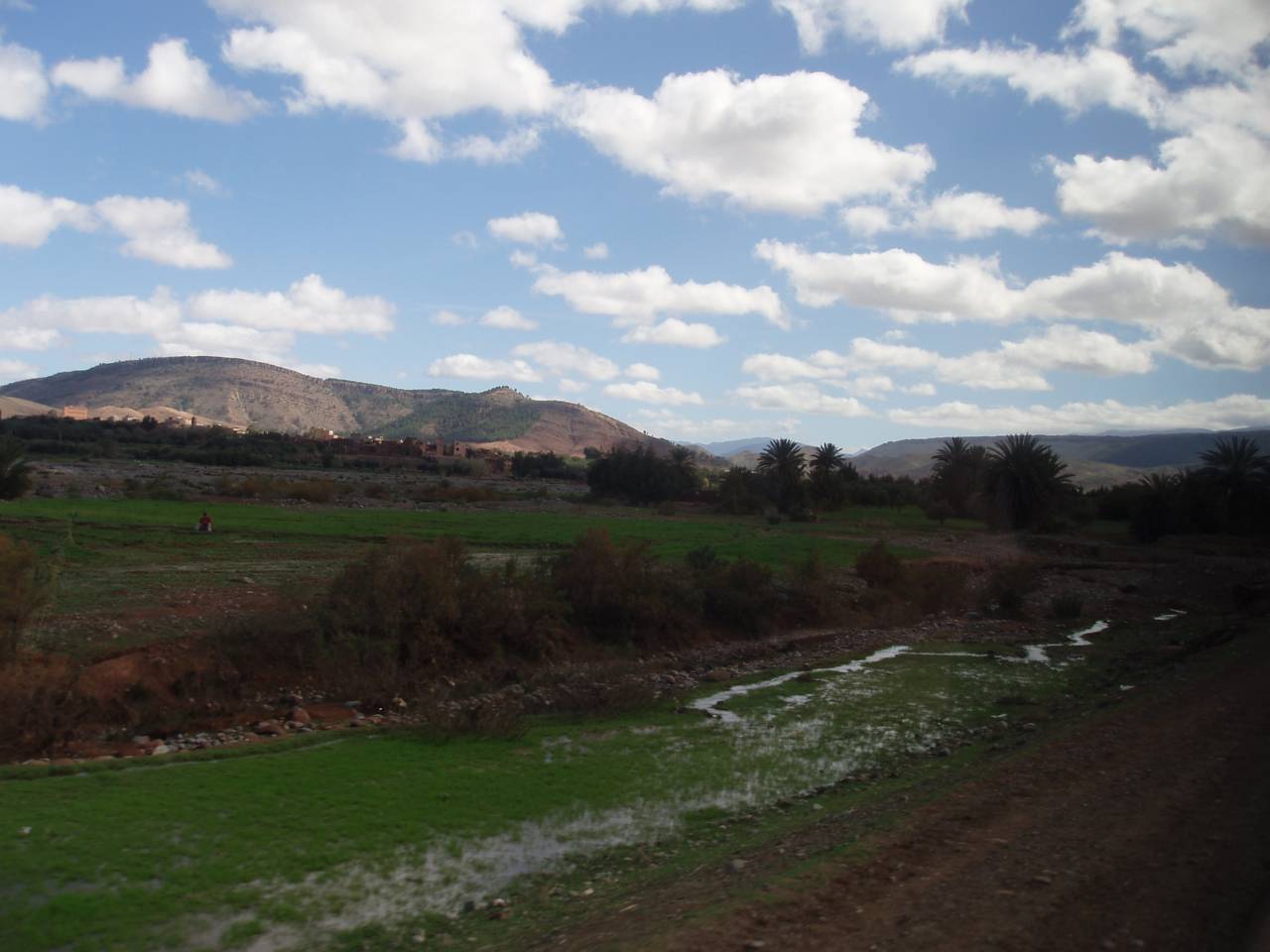
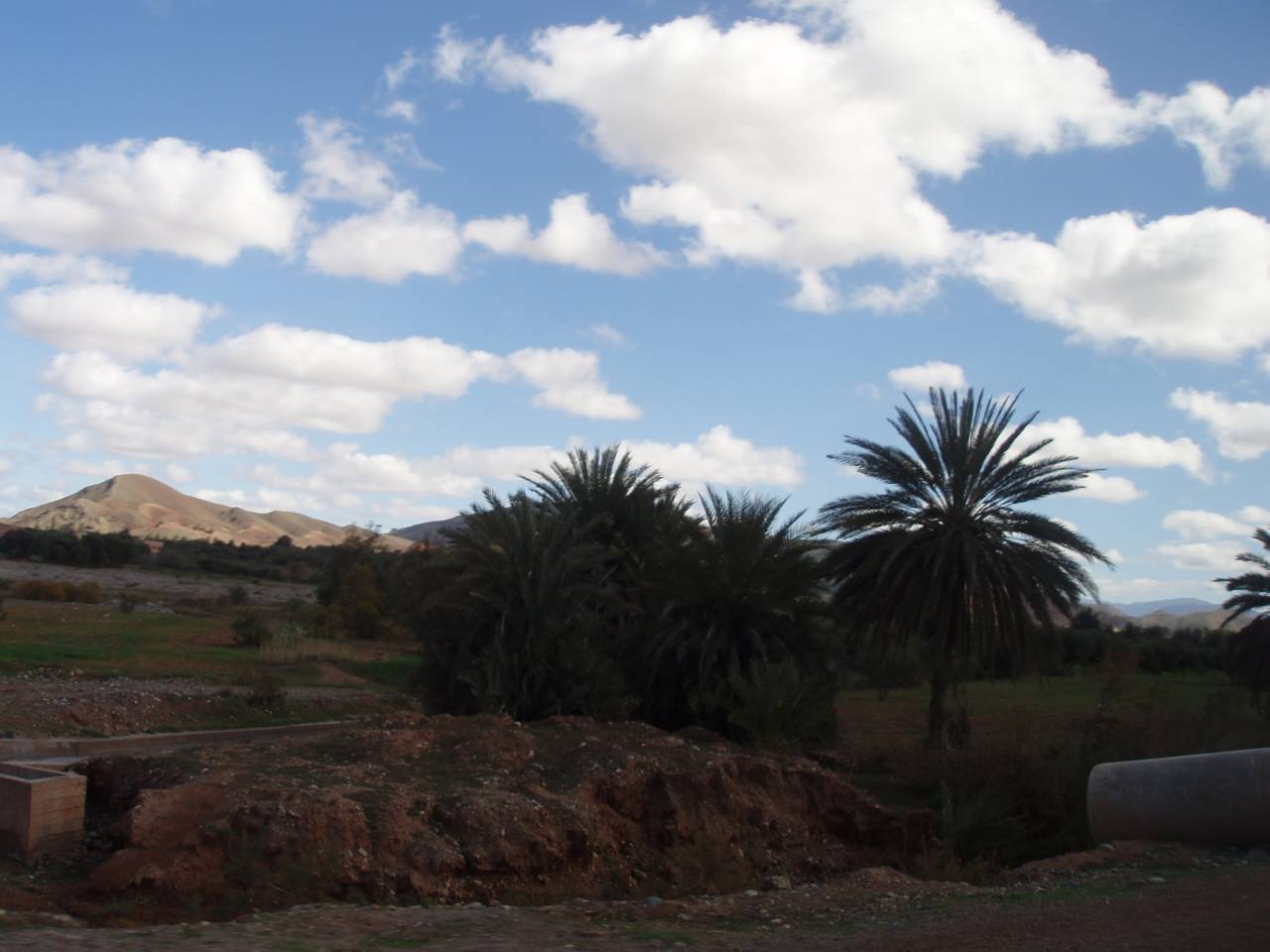


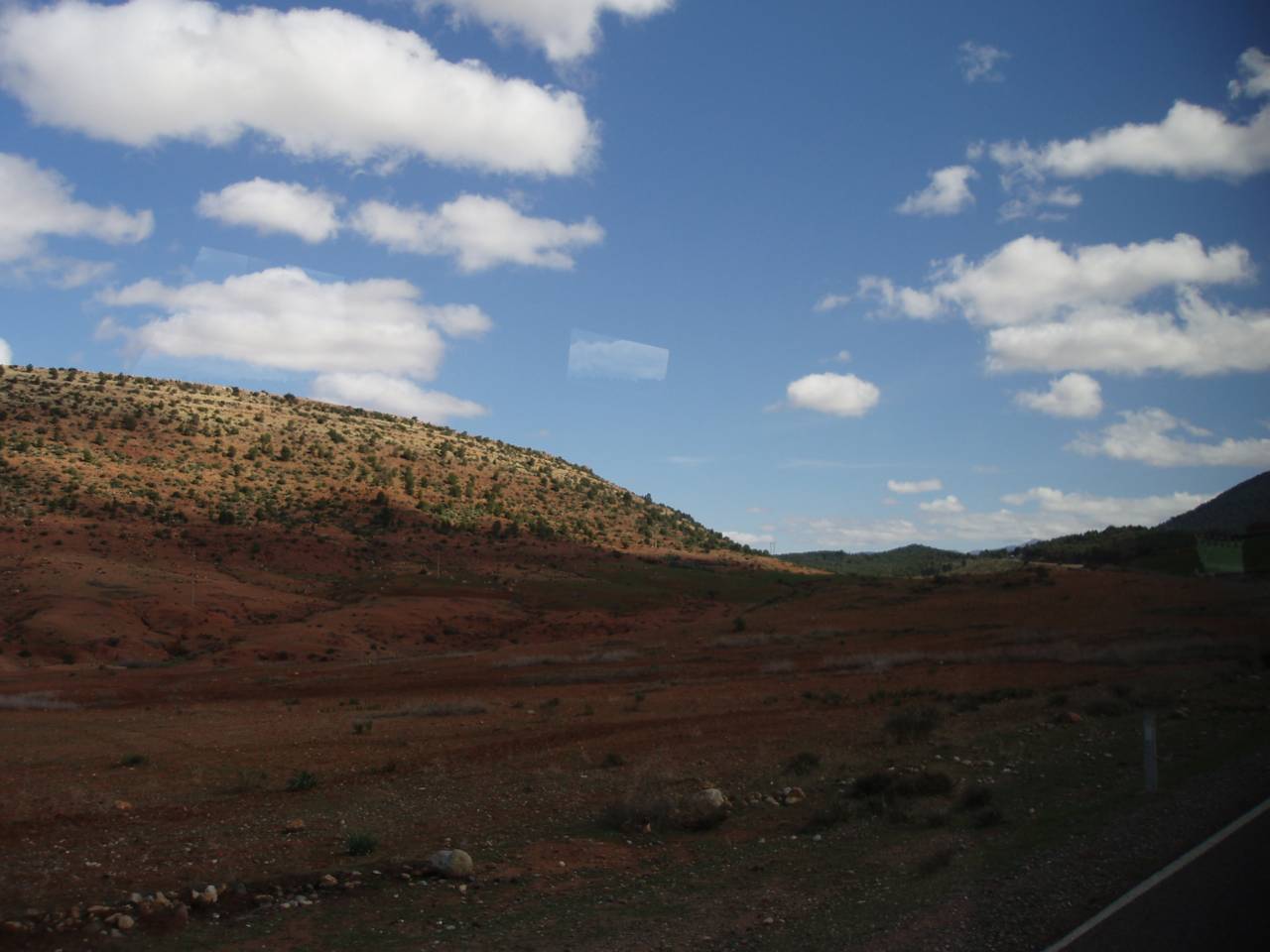

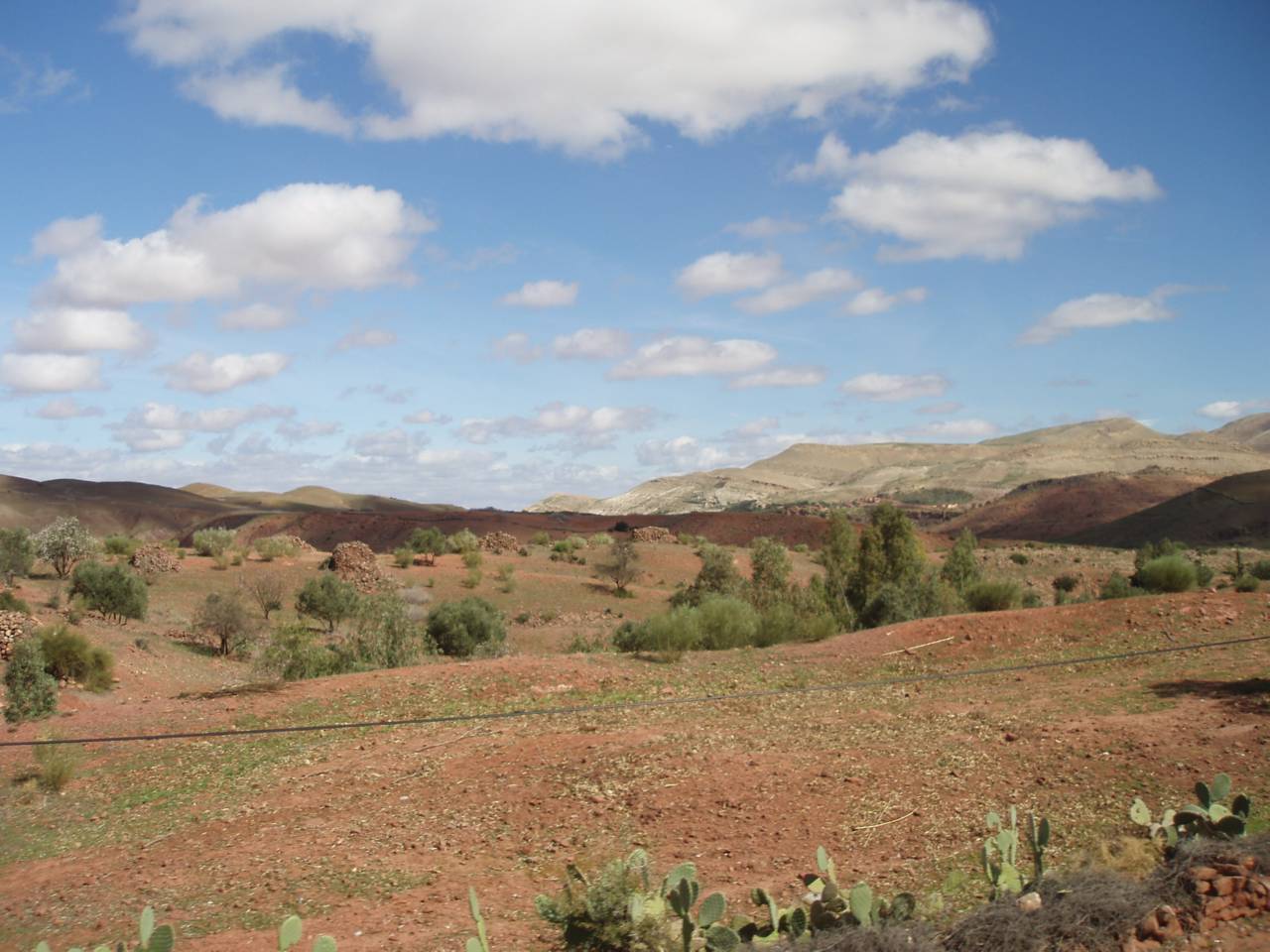
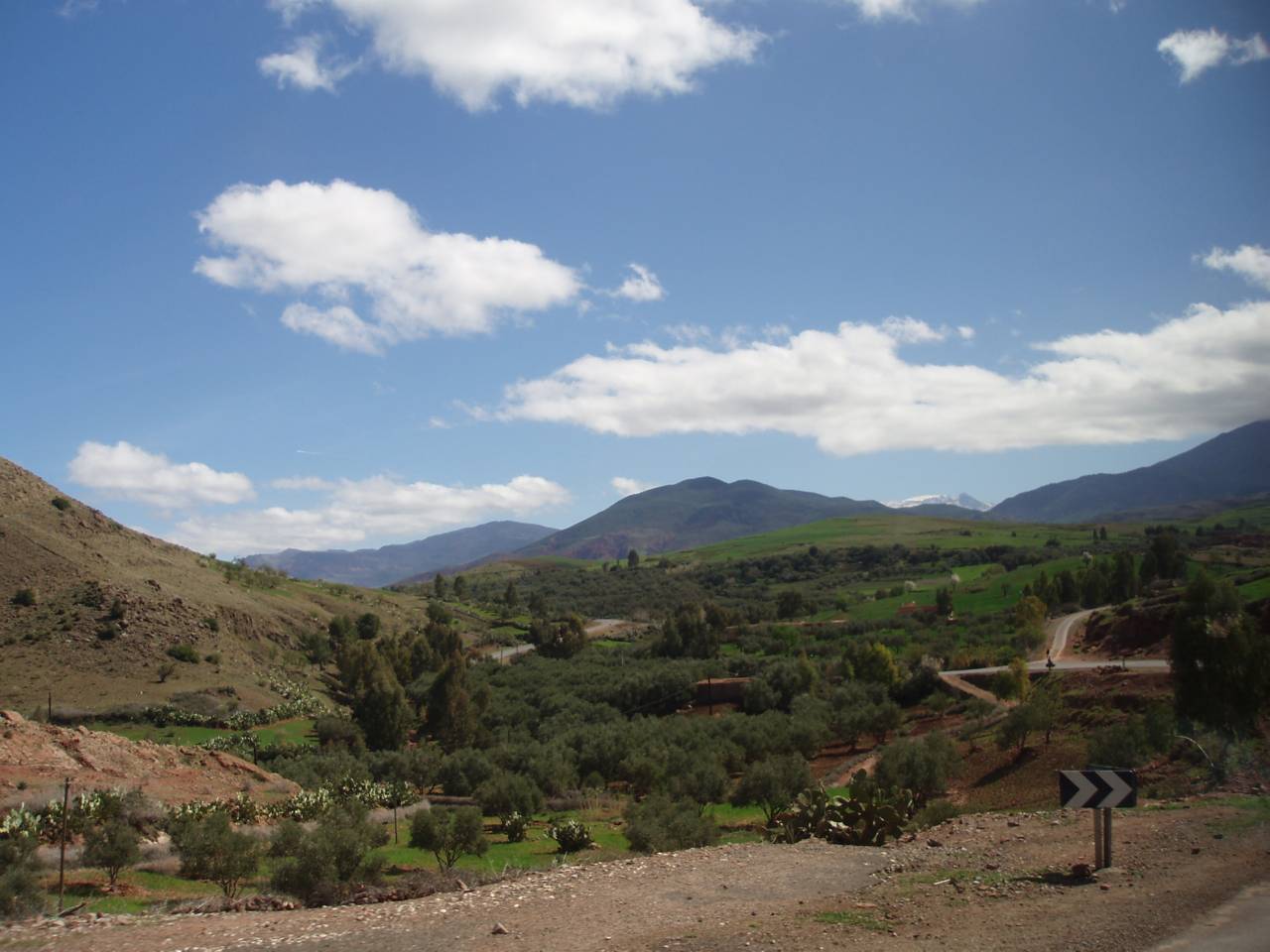
After we have finally left Marrakech behind us, the journey becomes interesting. At first the landscape is simply barren. One sees villages and some greenery along a small creek, but otherwise the landscape remains monotonous. However, that changes the further we get towards the mountains. After some time following a beautiful valley flooded with date palms, we turn into the first foothills. You see many villages and kasbahs, old clay fortresses, and finally the first “real” trees again.
We spiral higher and higher and can look down from above both back into the barren lowlands and on the first snow-capped mountains in front of us. In between are beautiful valleys, criss-crossed by fresh mountain streams and surrounded by a sea of flowers.
After a four-hour drive, the bus stops at a mountain village where the residents are prepared to offer people fresh tagines and water for sale.
The Low and Middle Atlas
Some enterprising villagers have set up a fossil display area, although my guide pointed out that some of these are genuinely handcrafted. Fake or real, the pieces are impressive: fossilized trilobites, shells and beautifully made quartz spheres are for sale at bargain prices. Su and I still limit ourselves to looking.
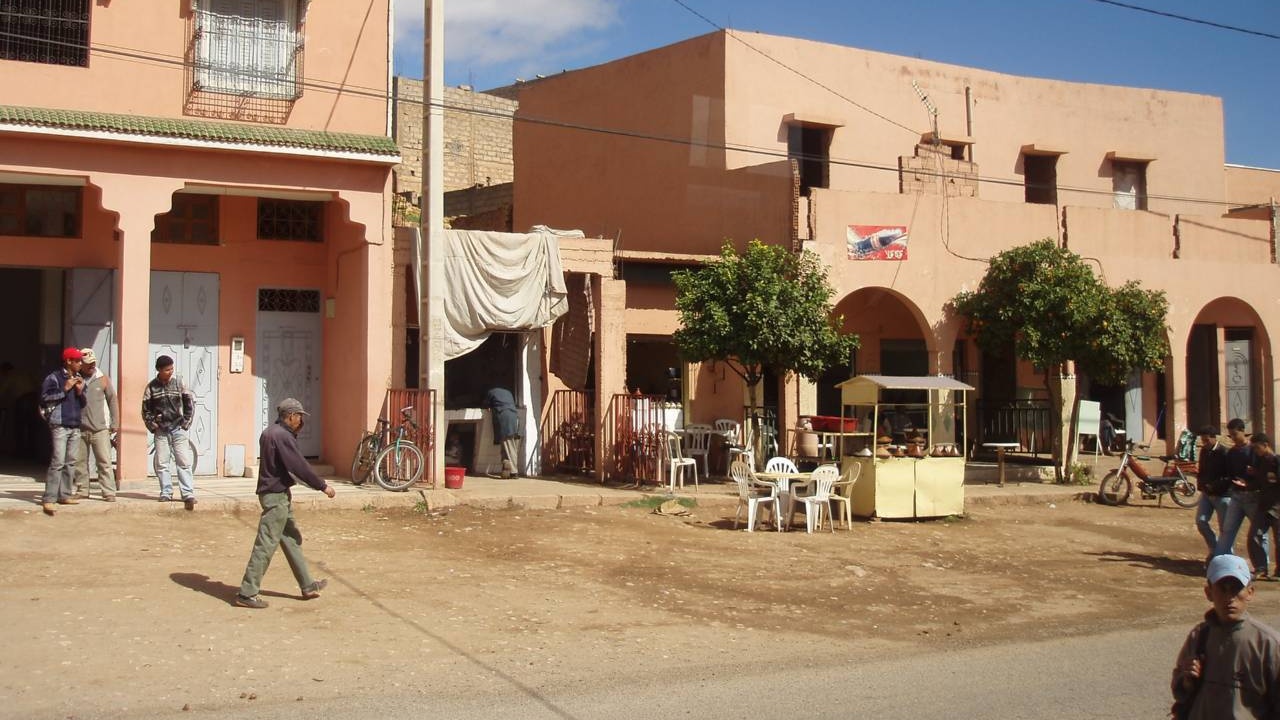
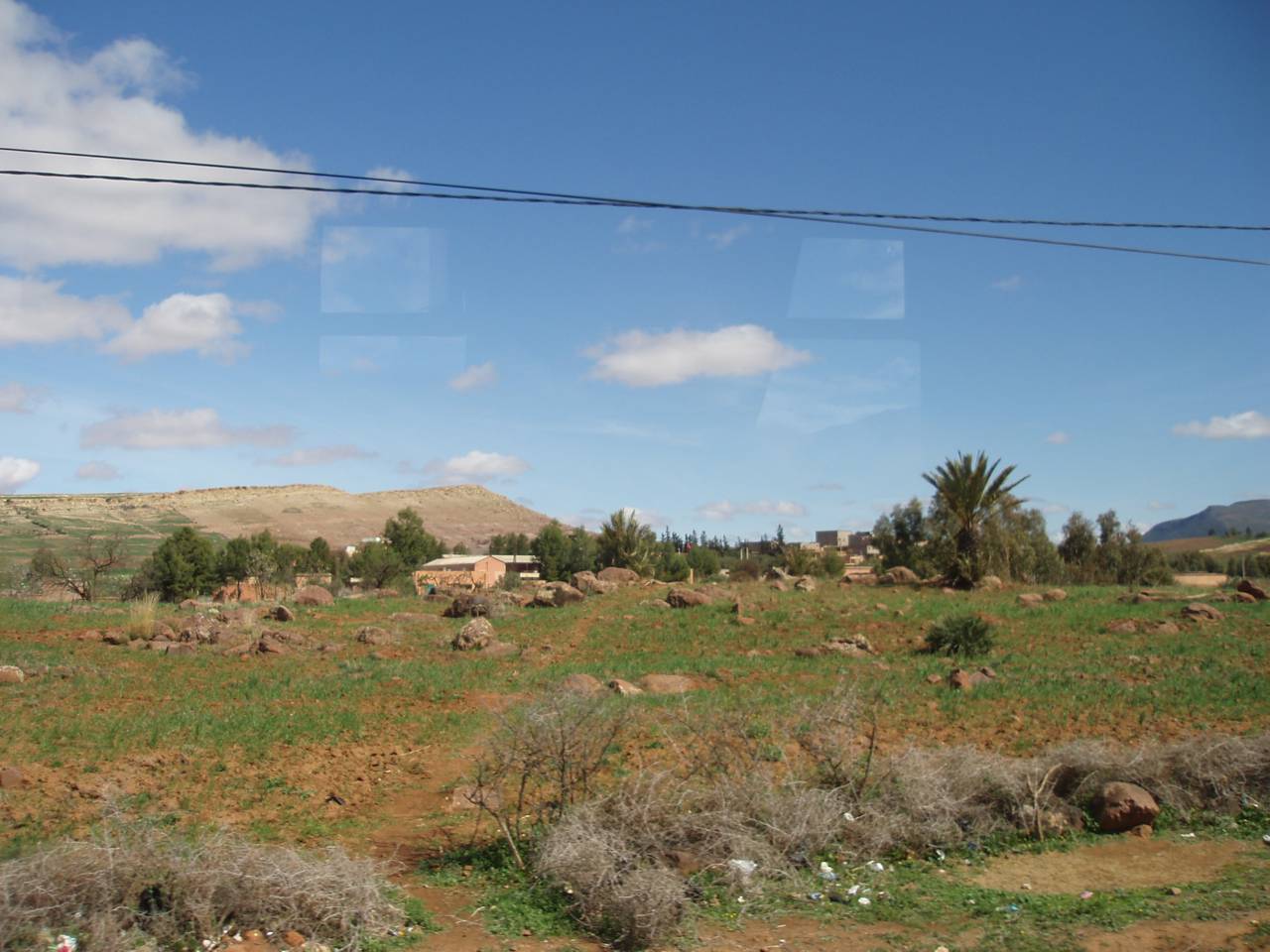
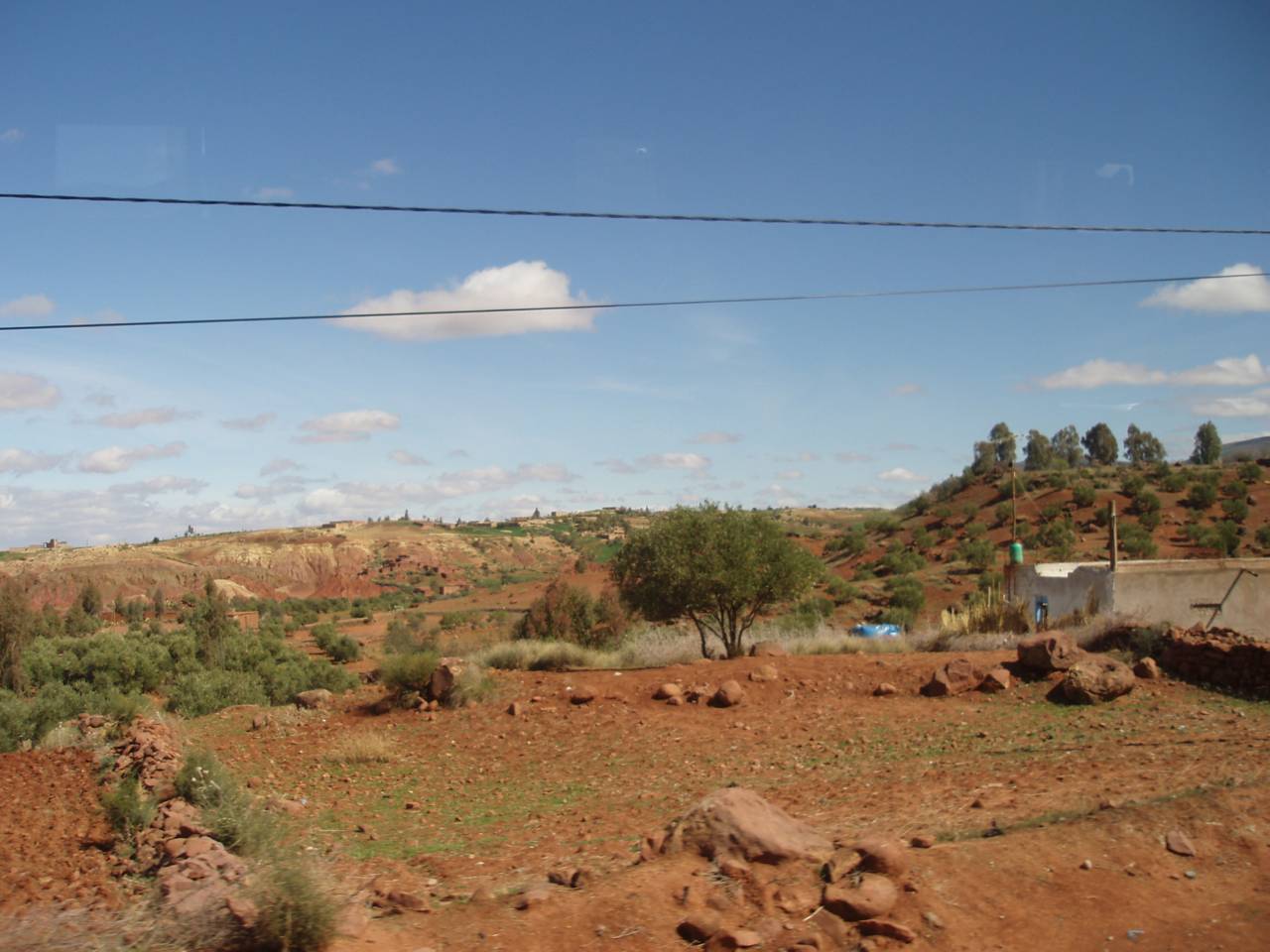

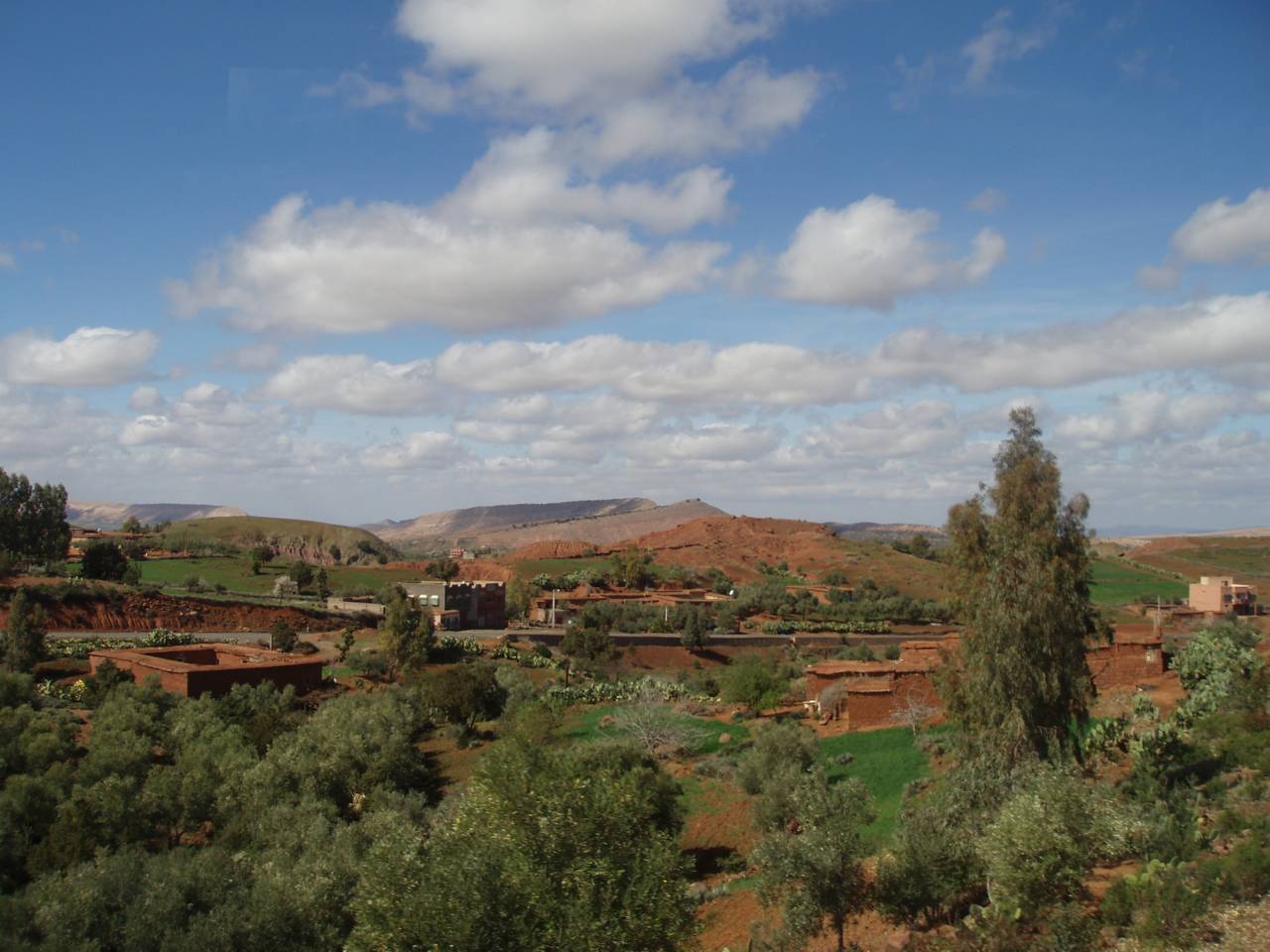
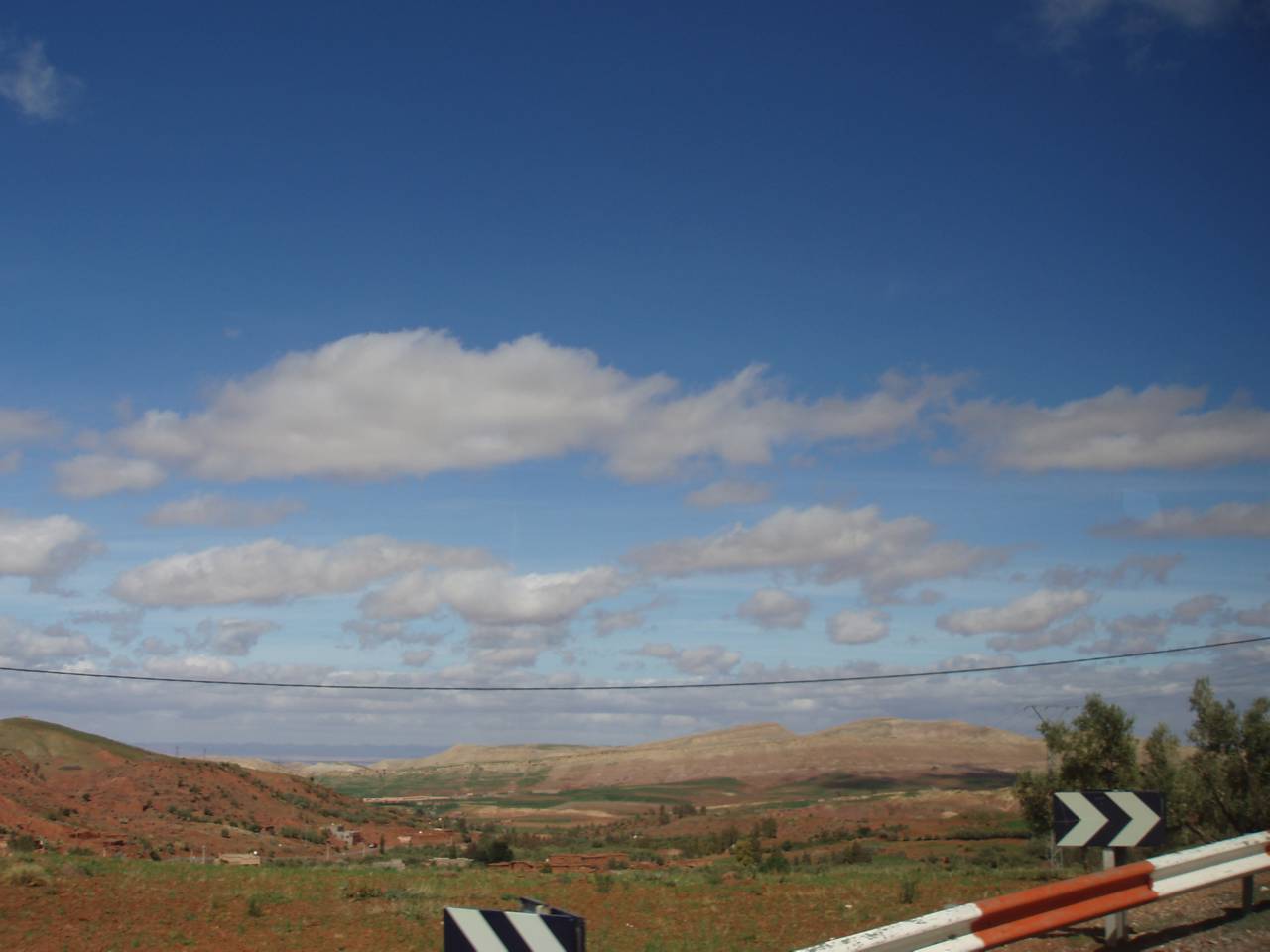
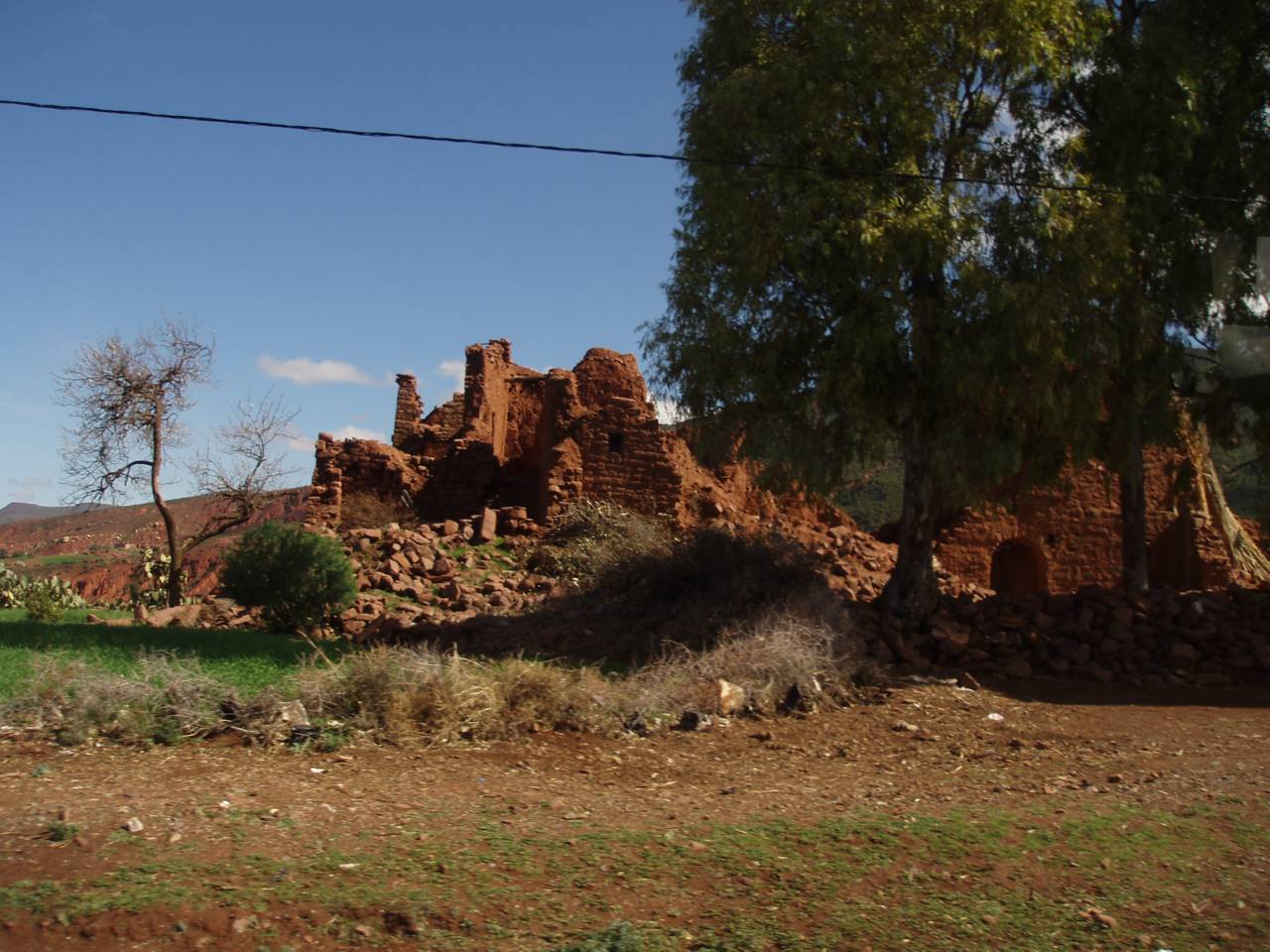
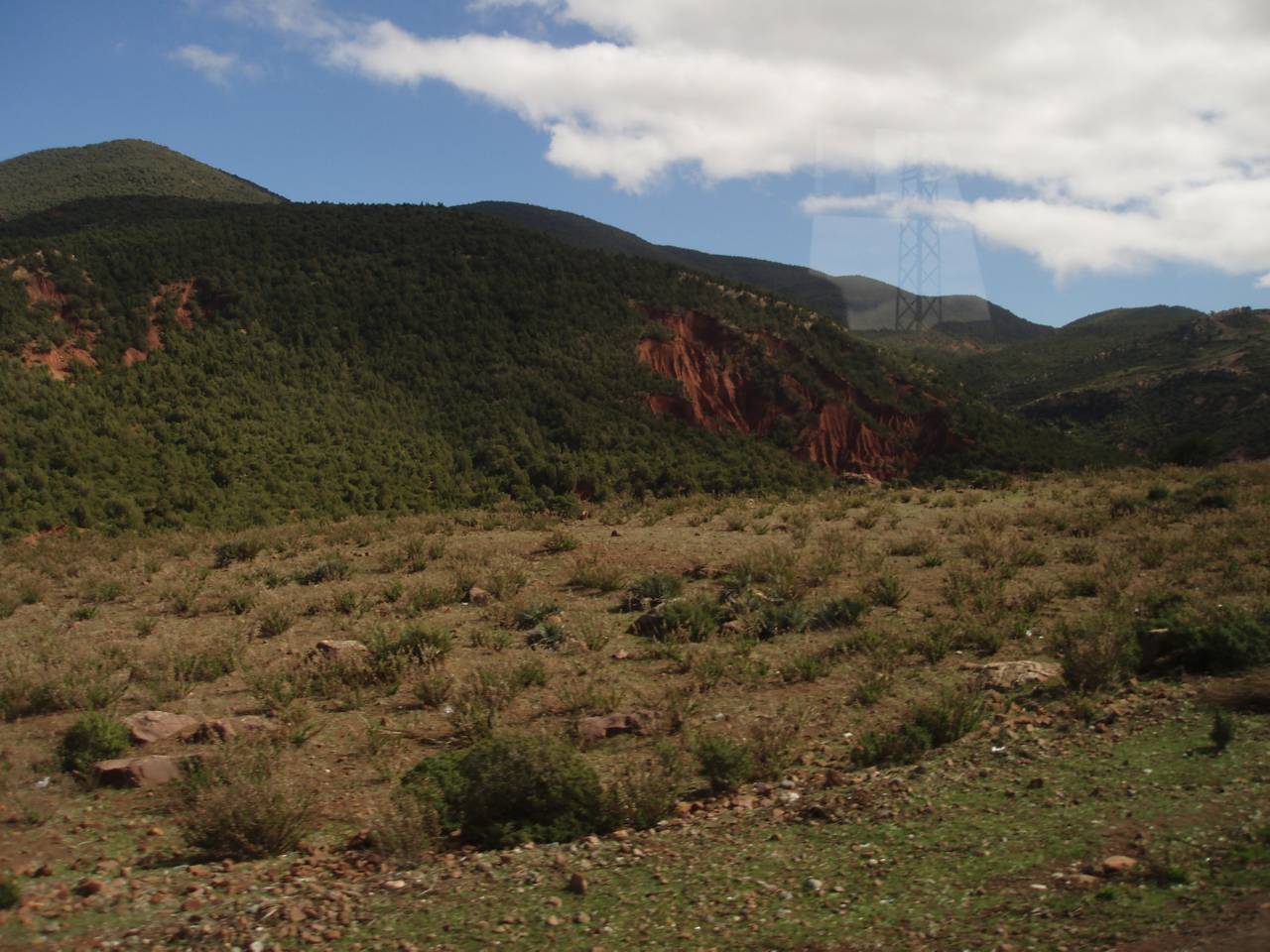

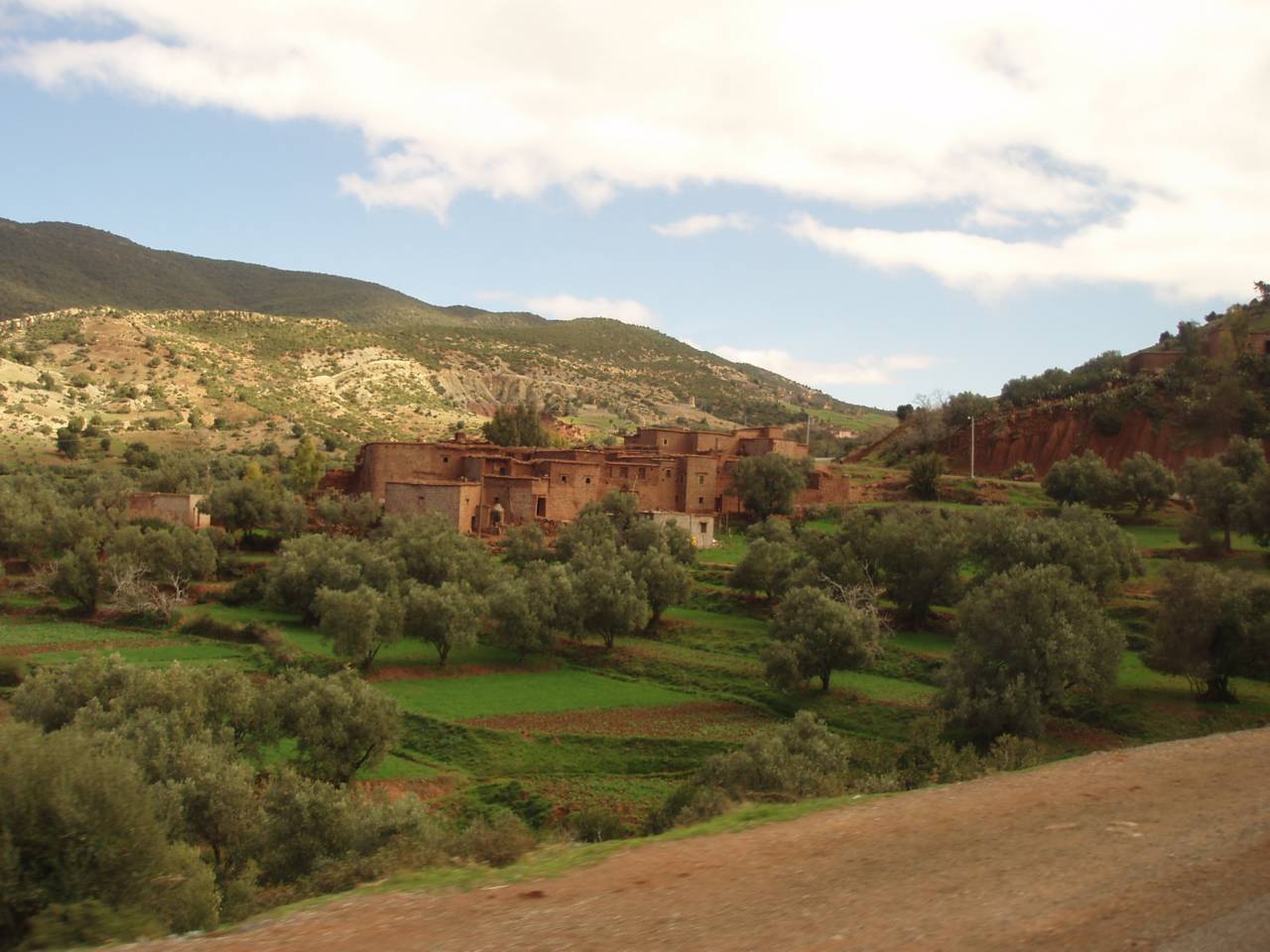
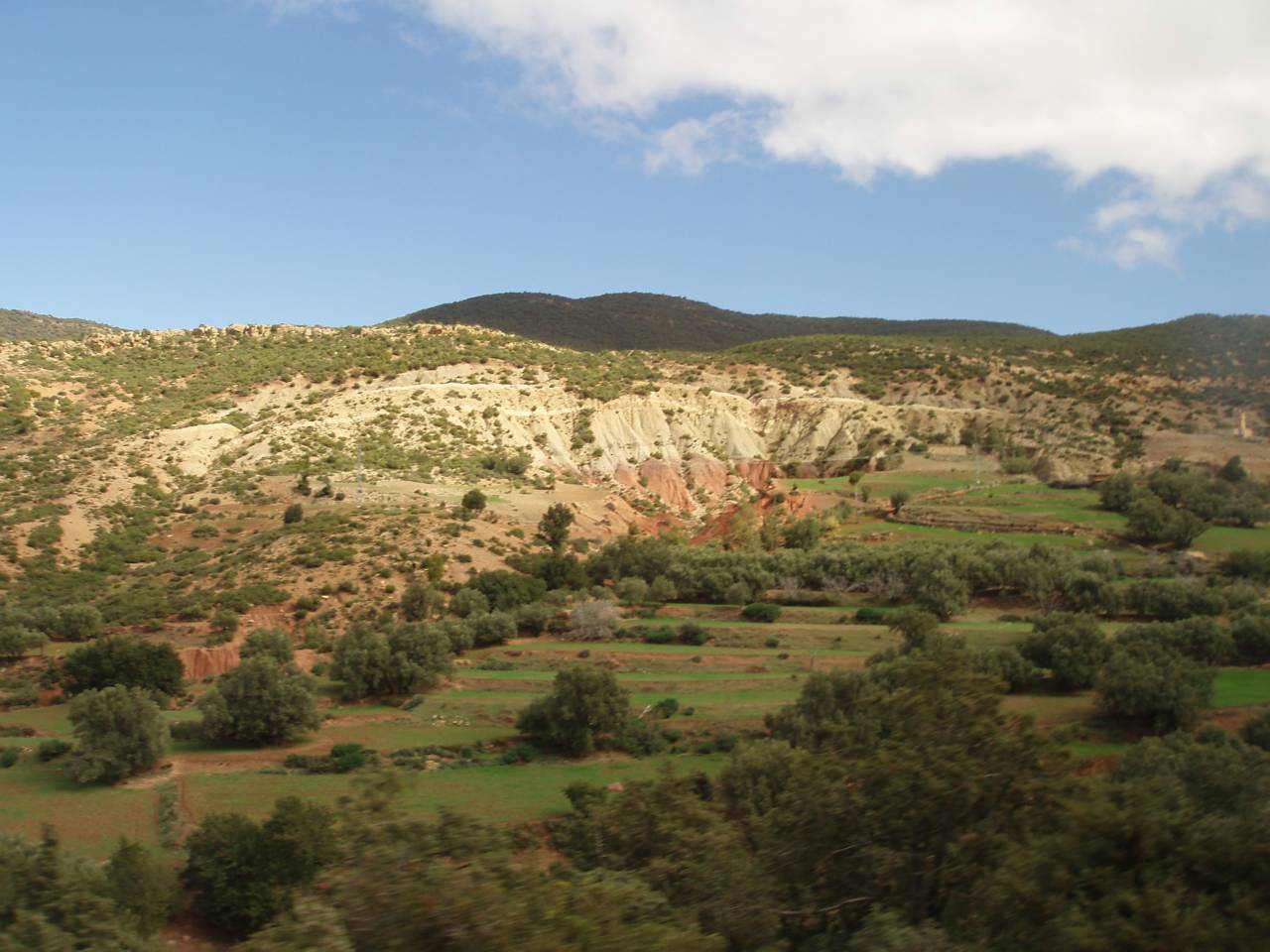
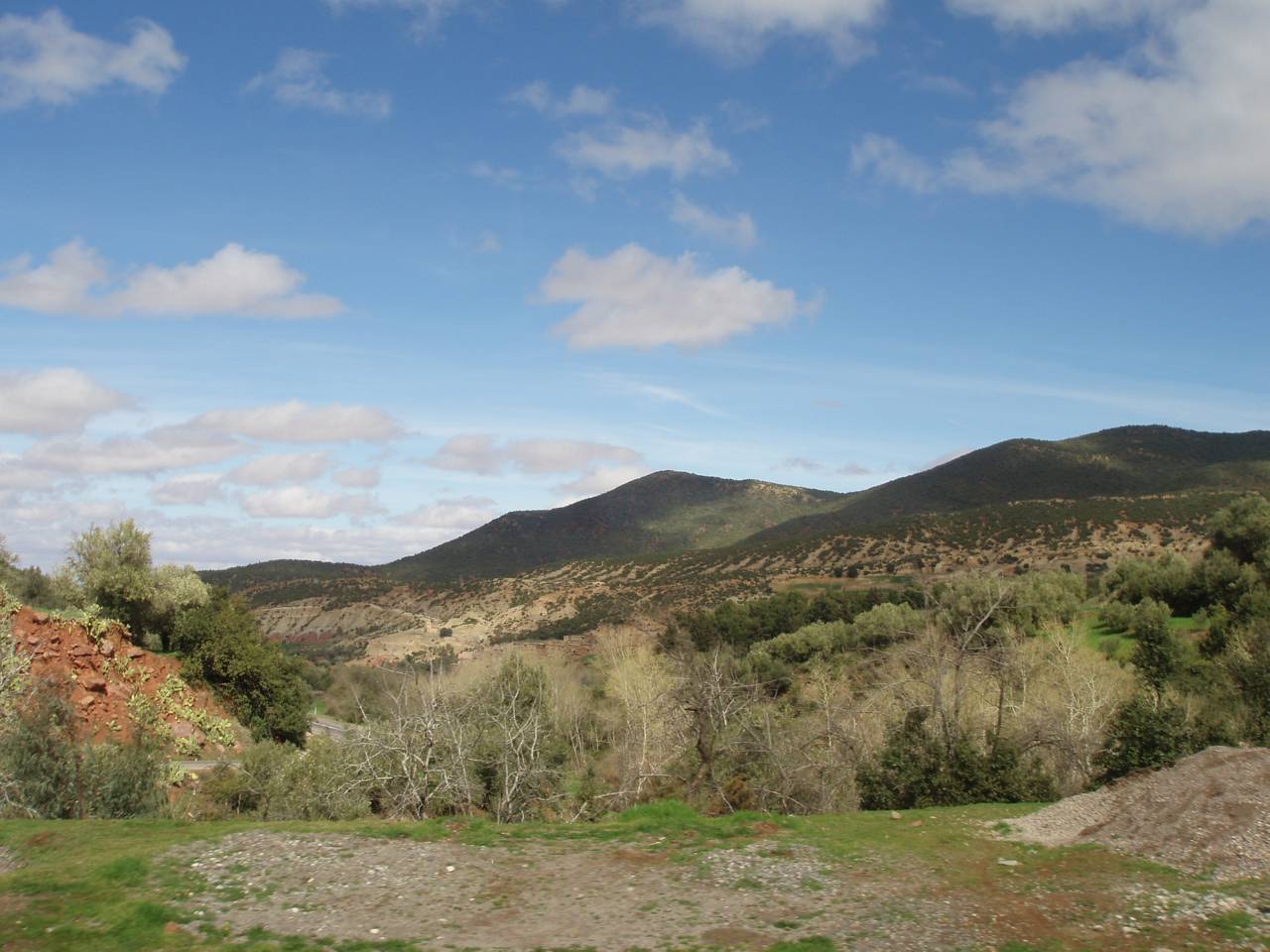
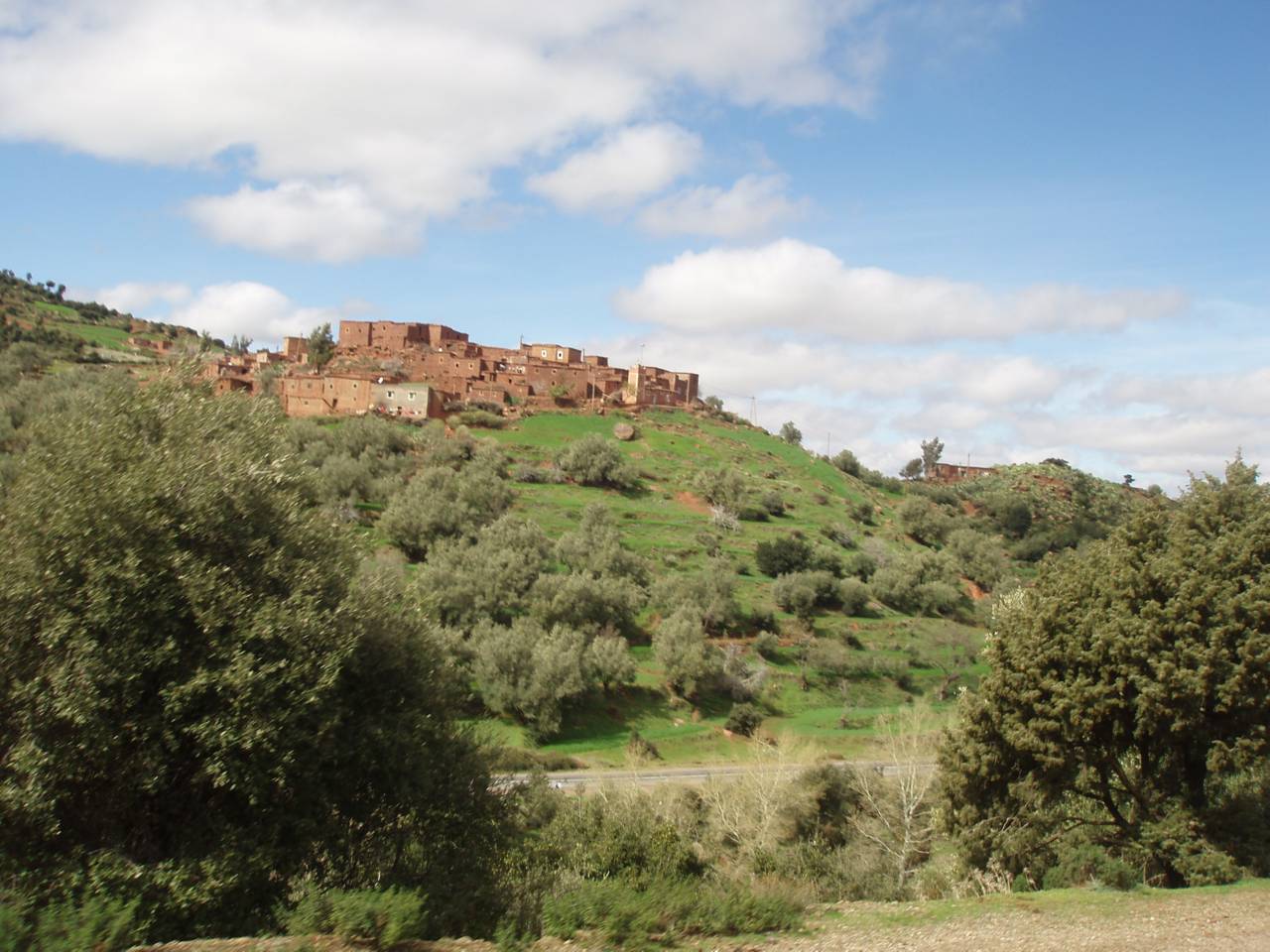
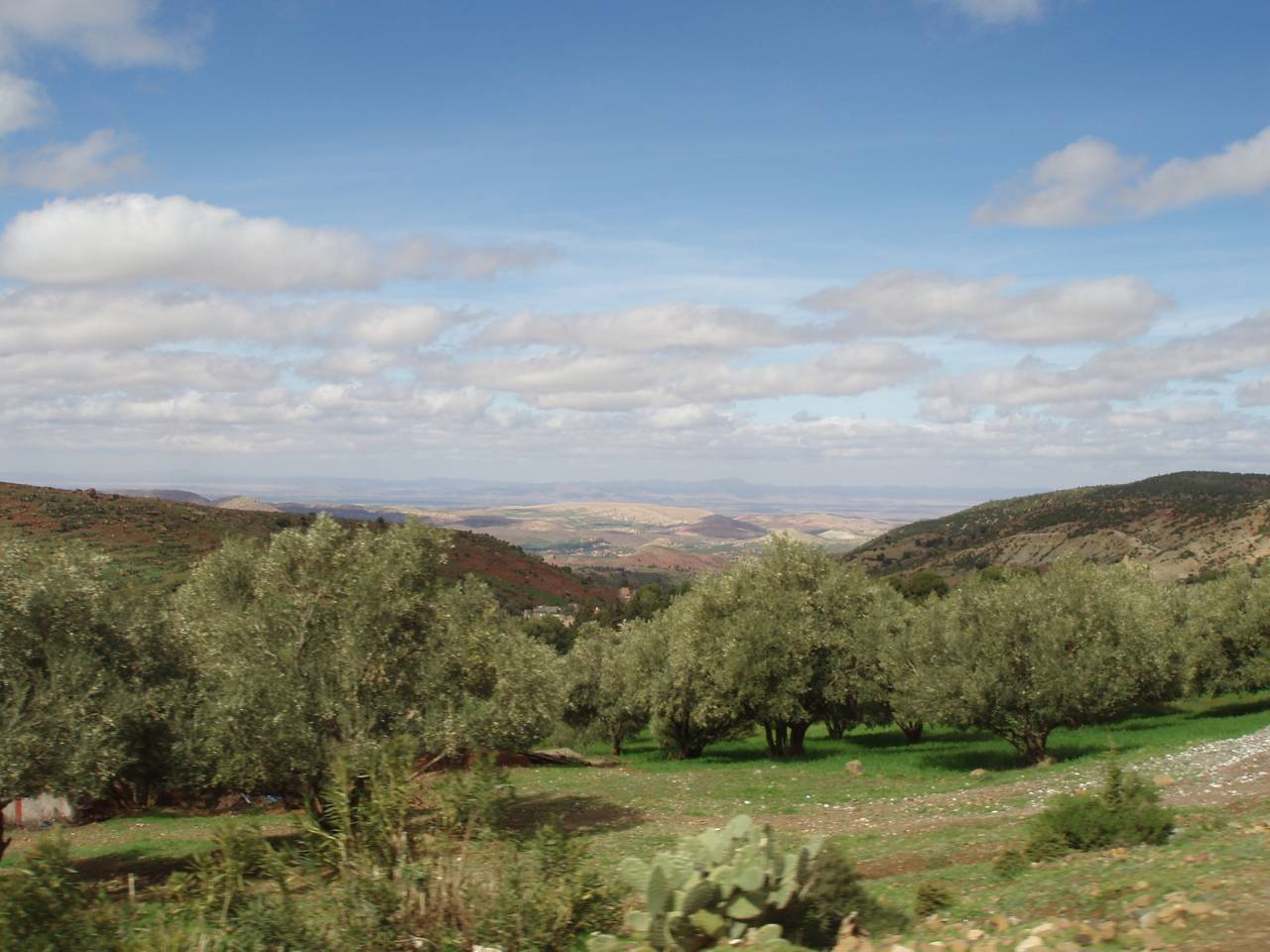



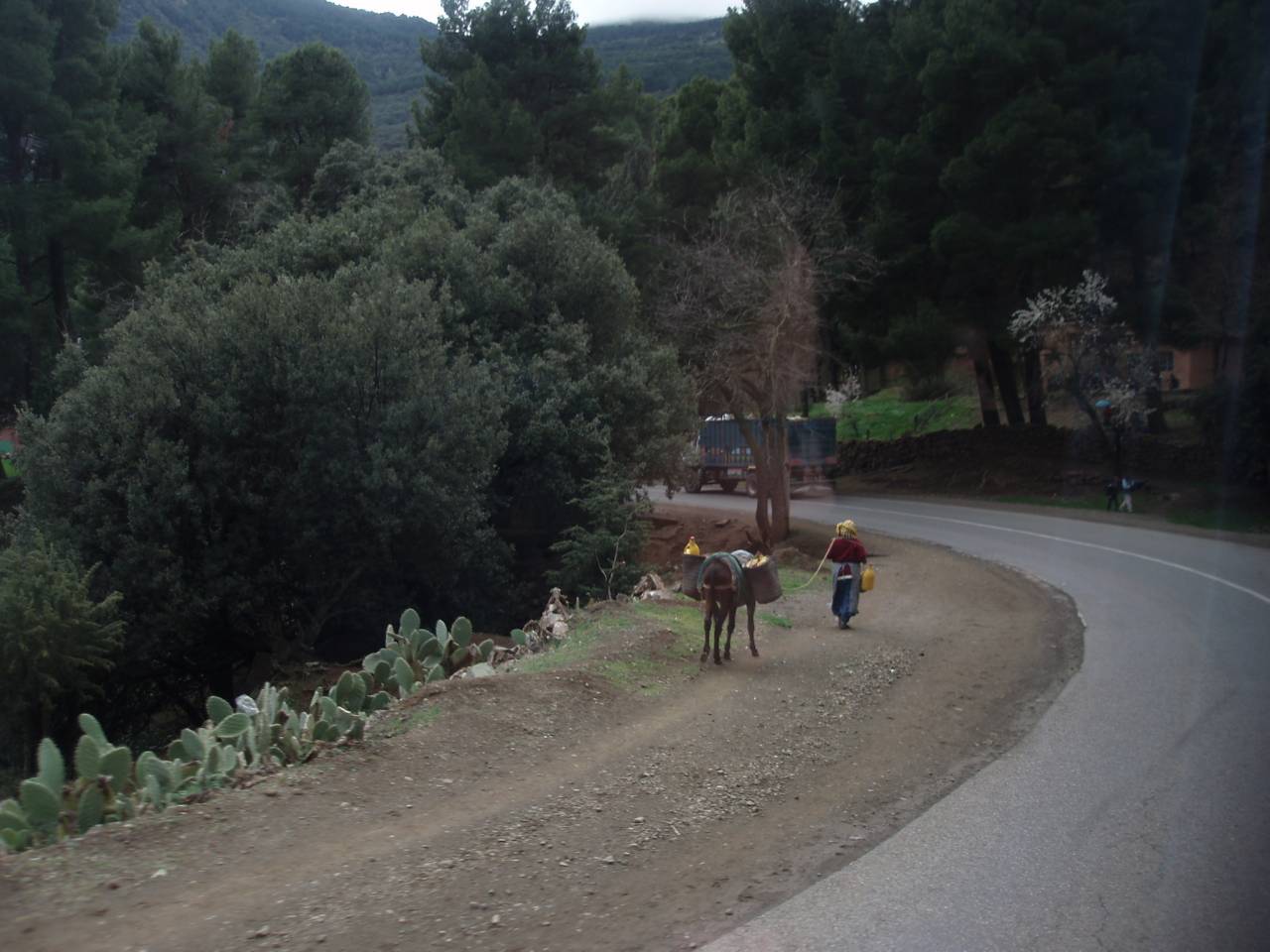
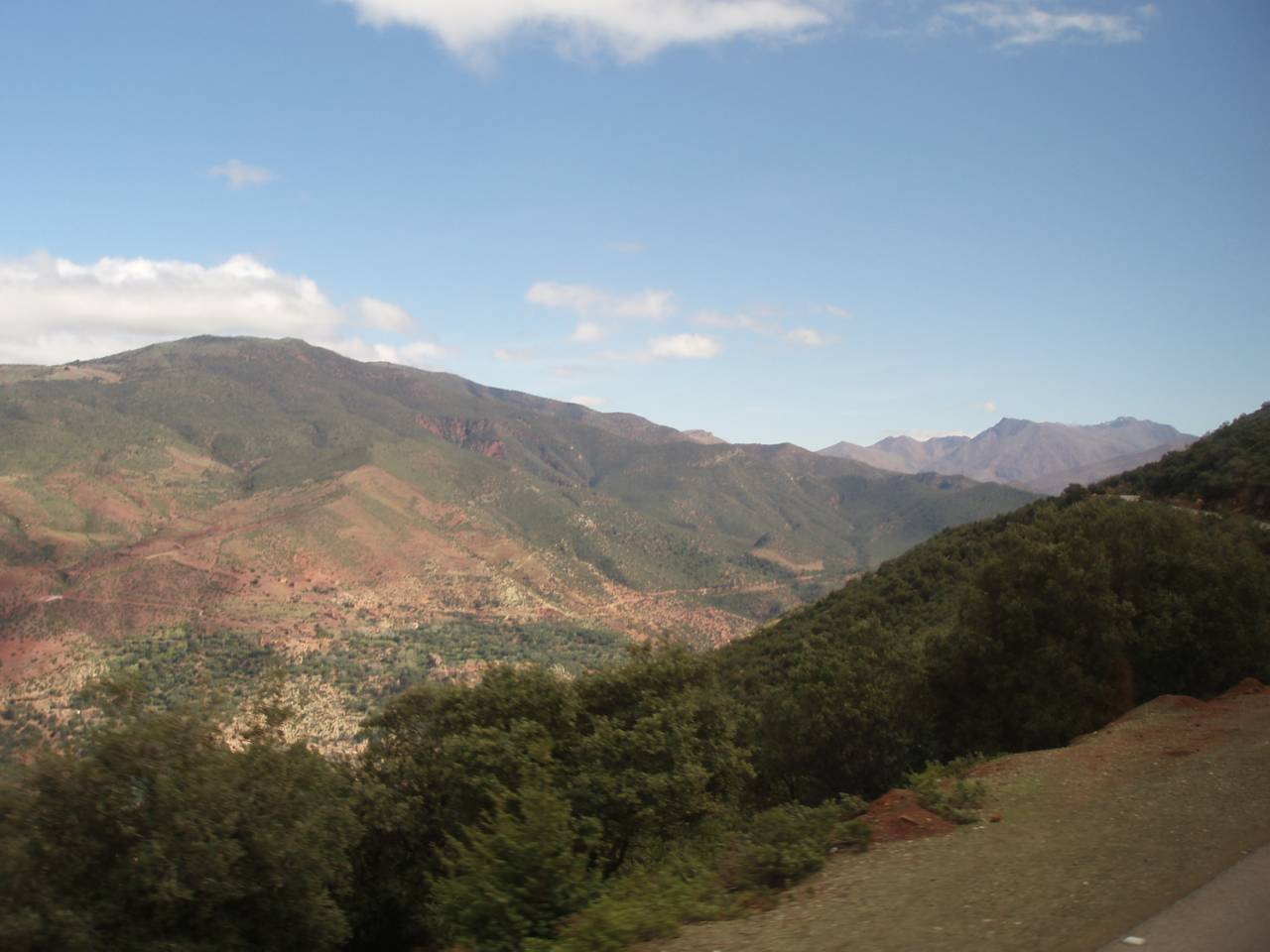

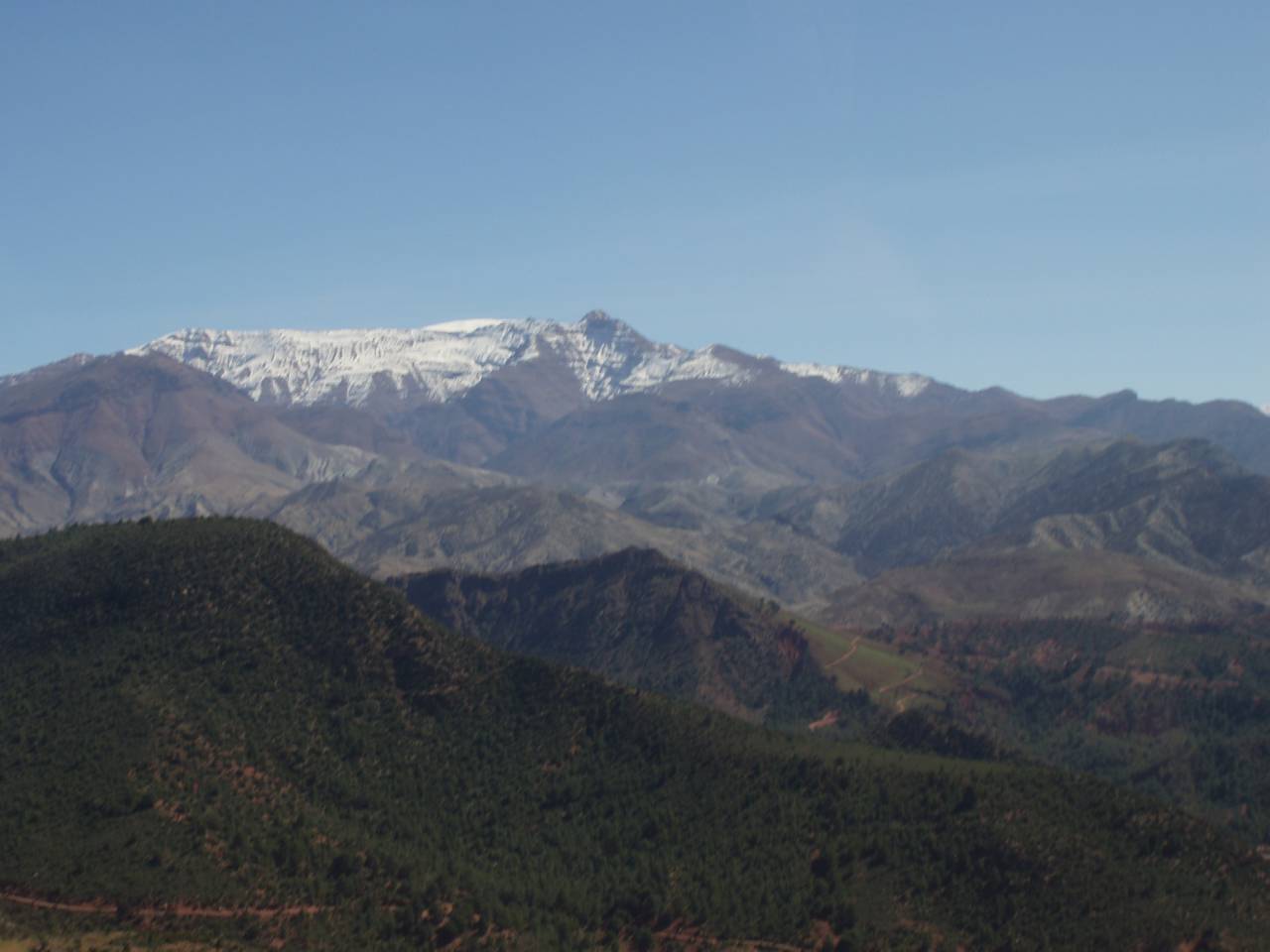
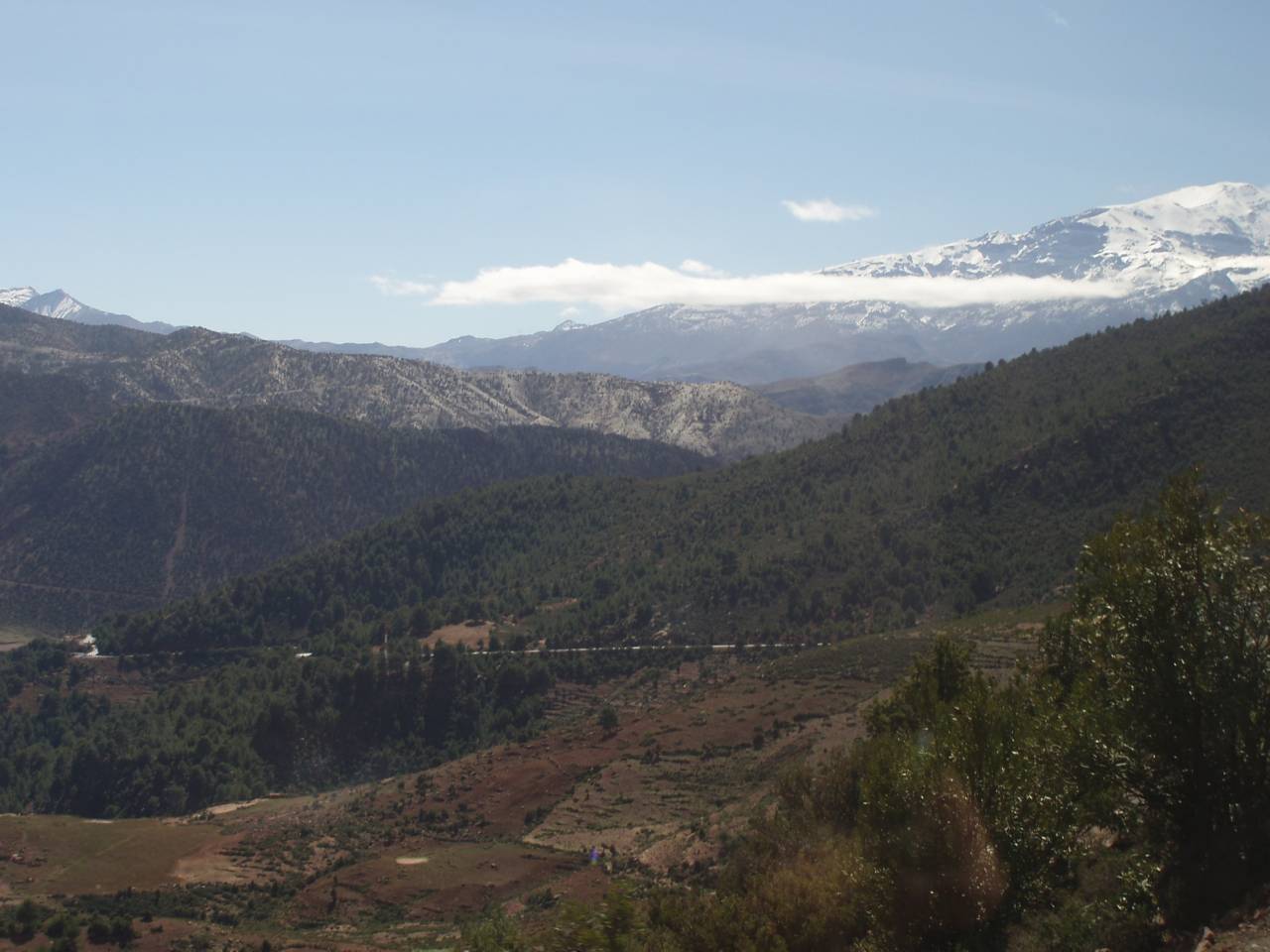

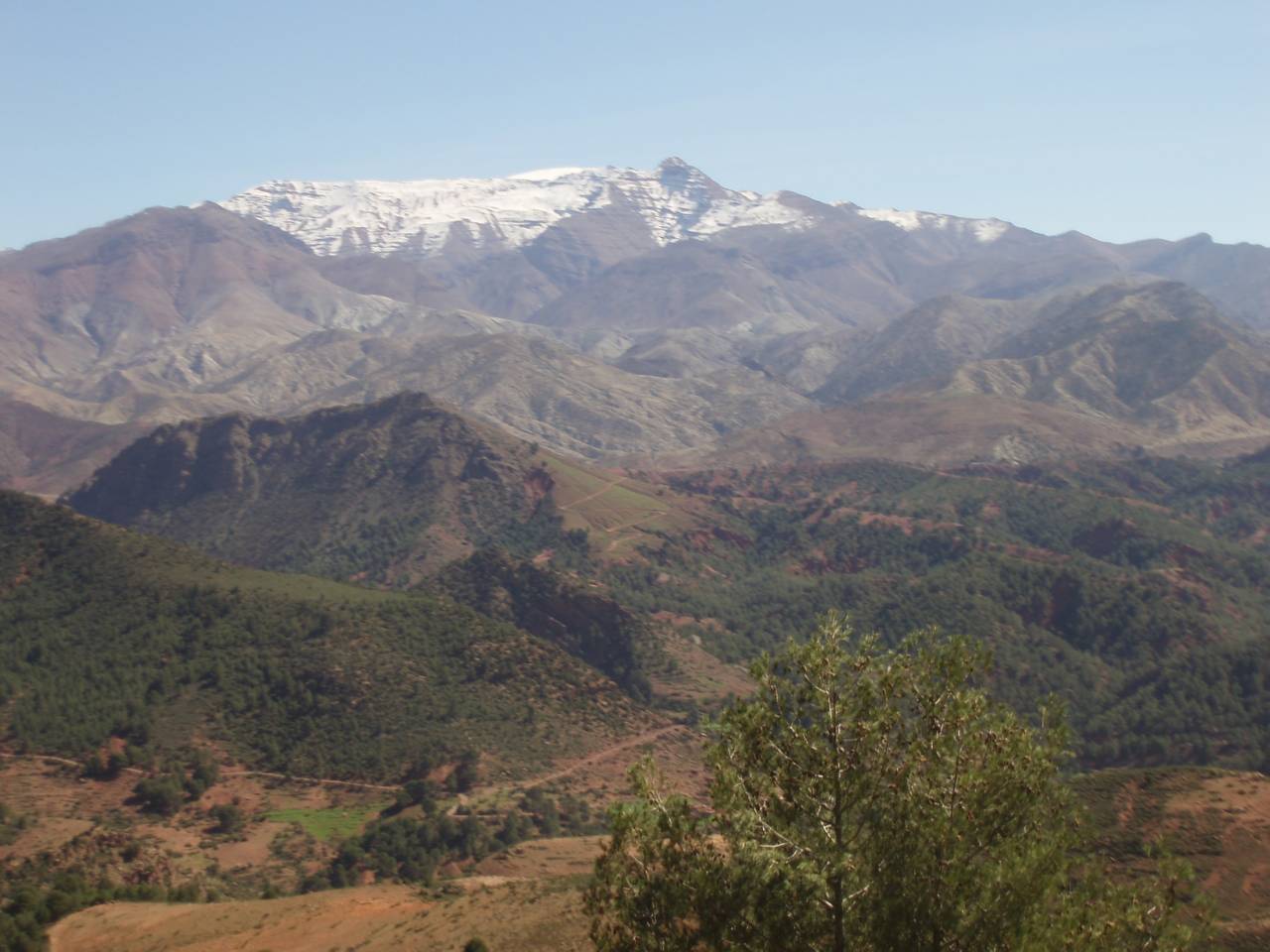
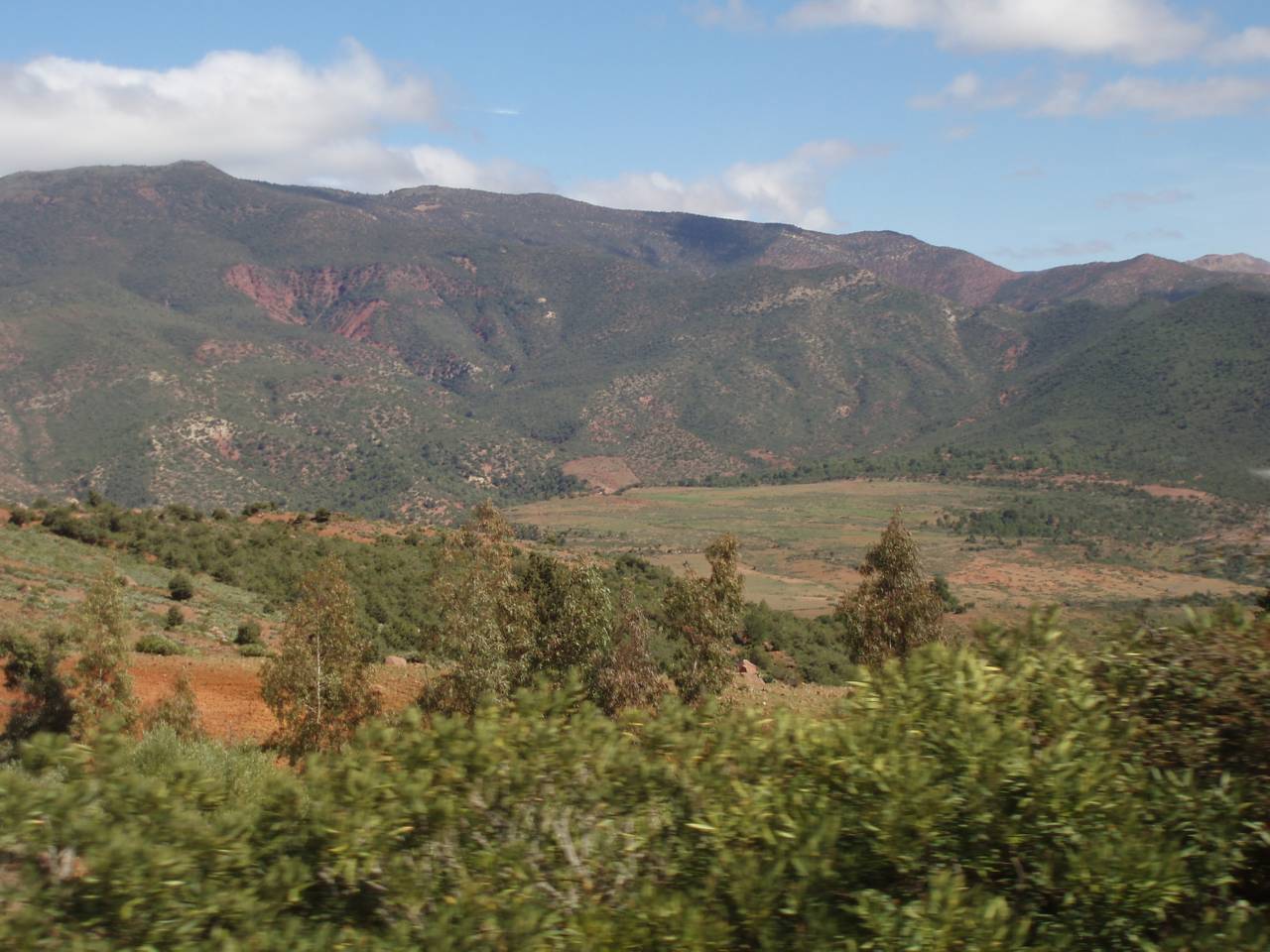
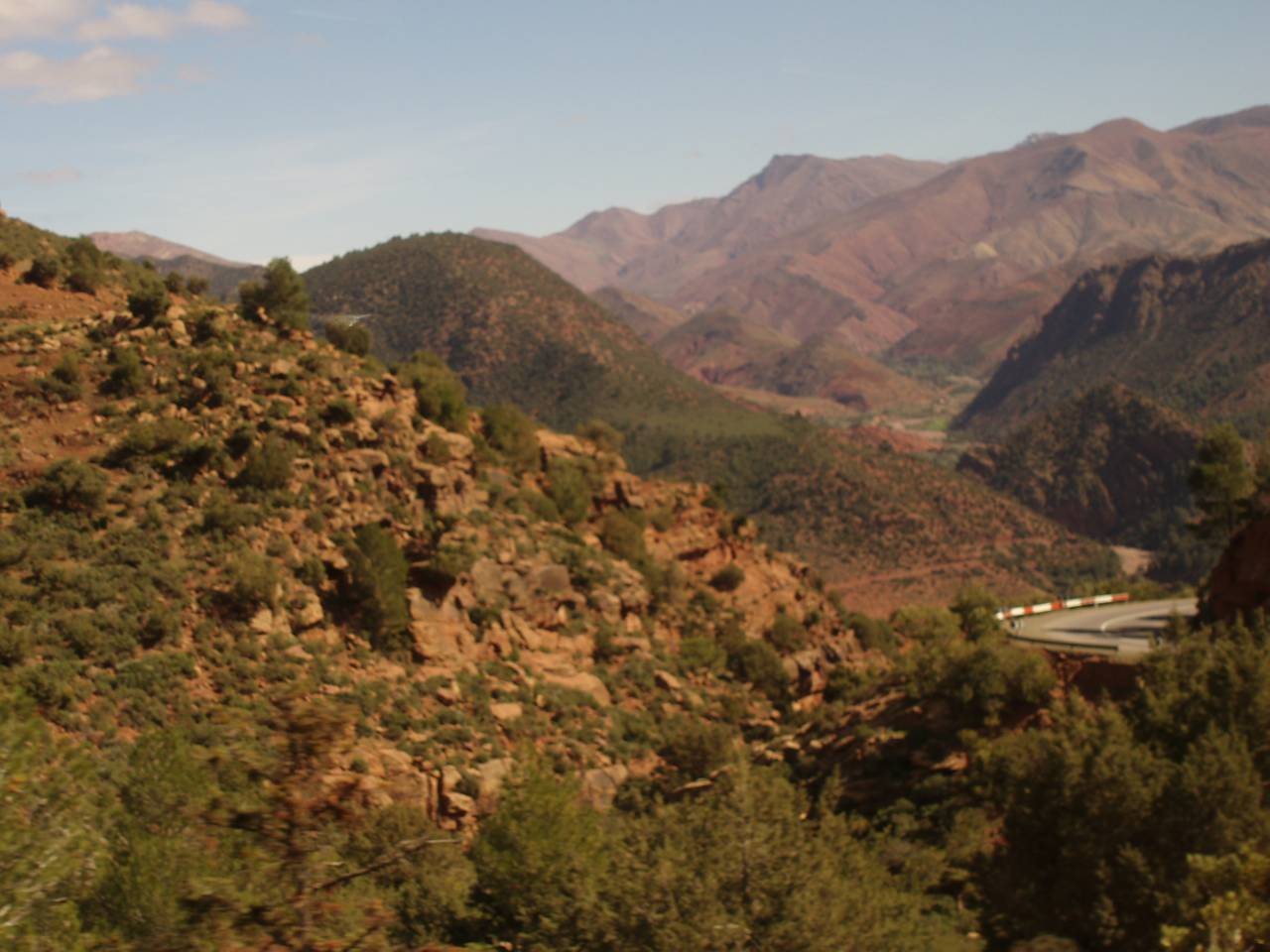
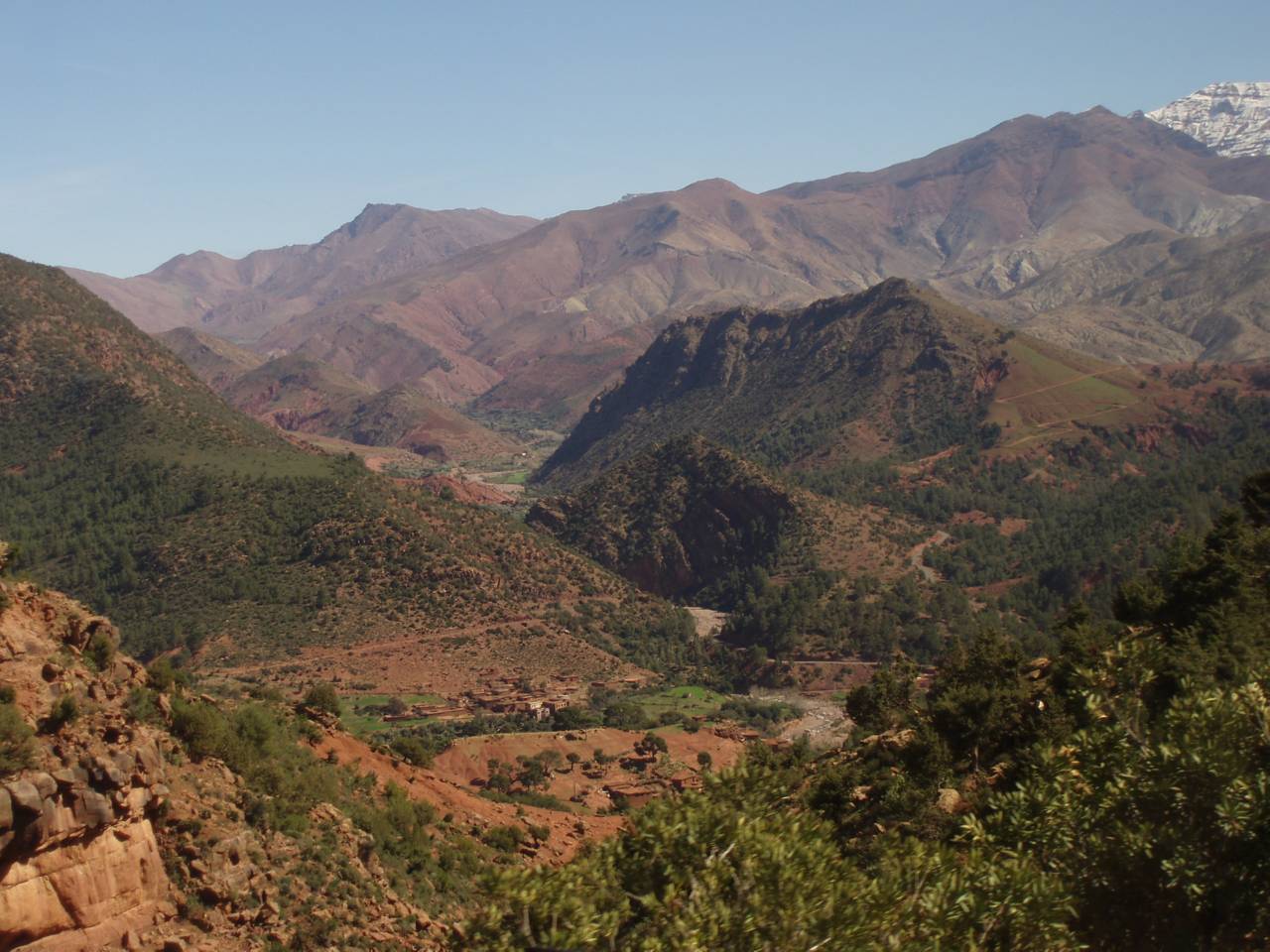
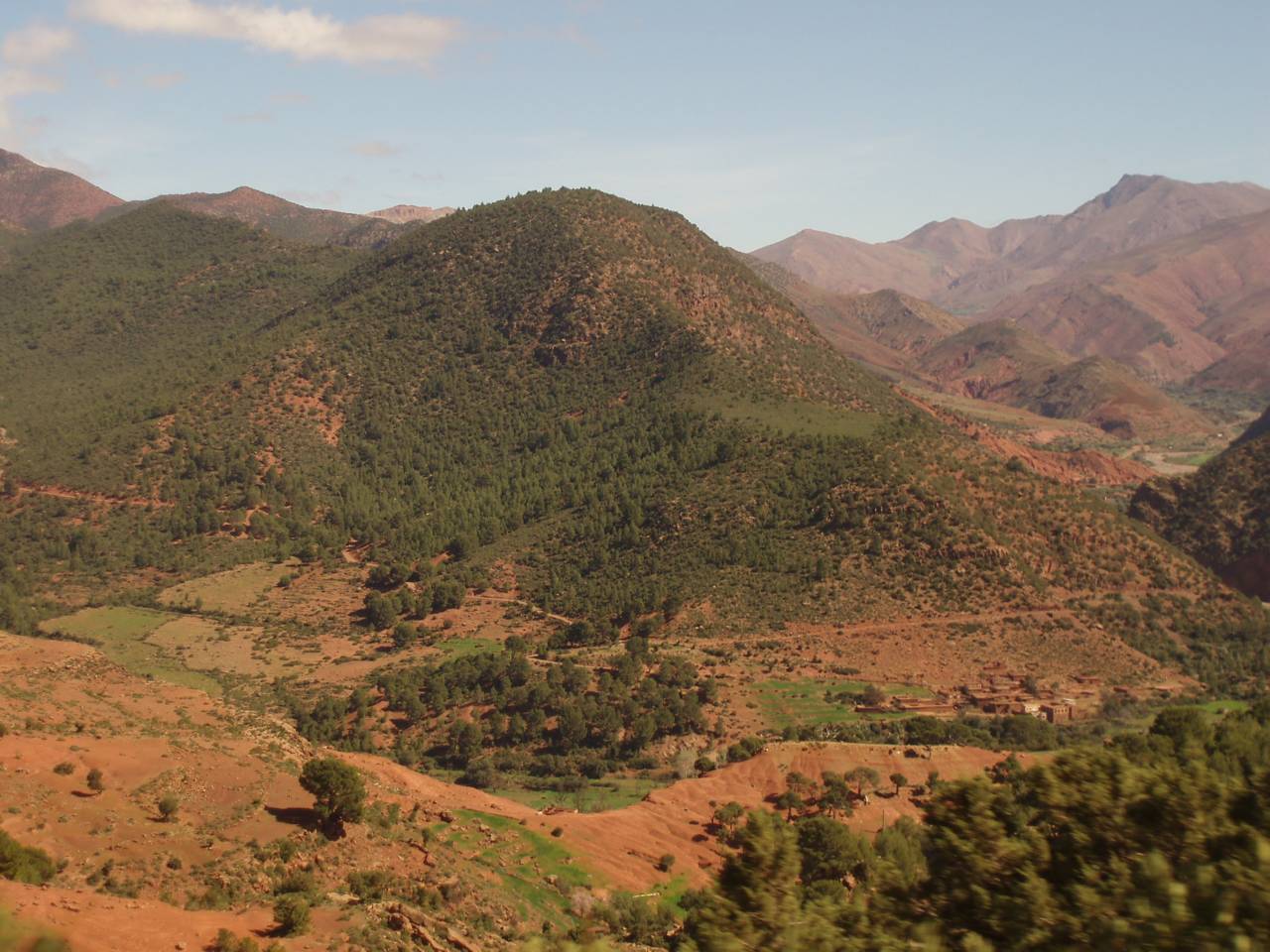

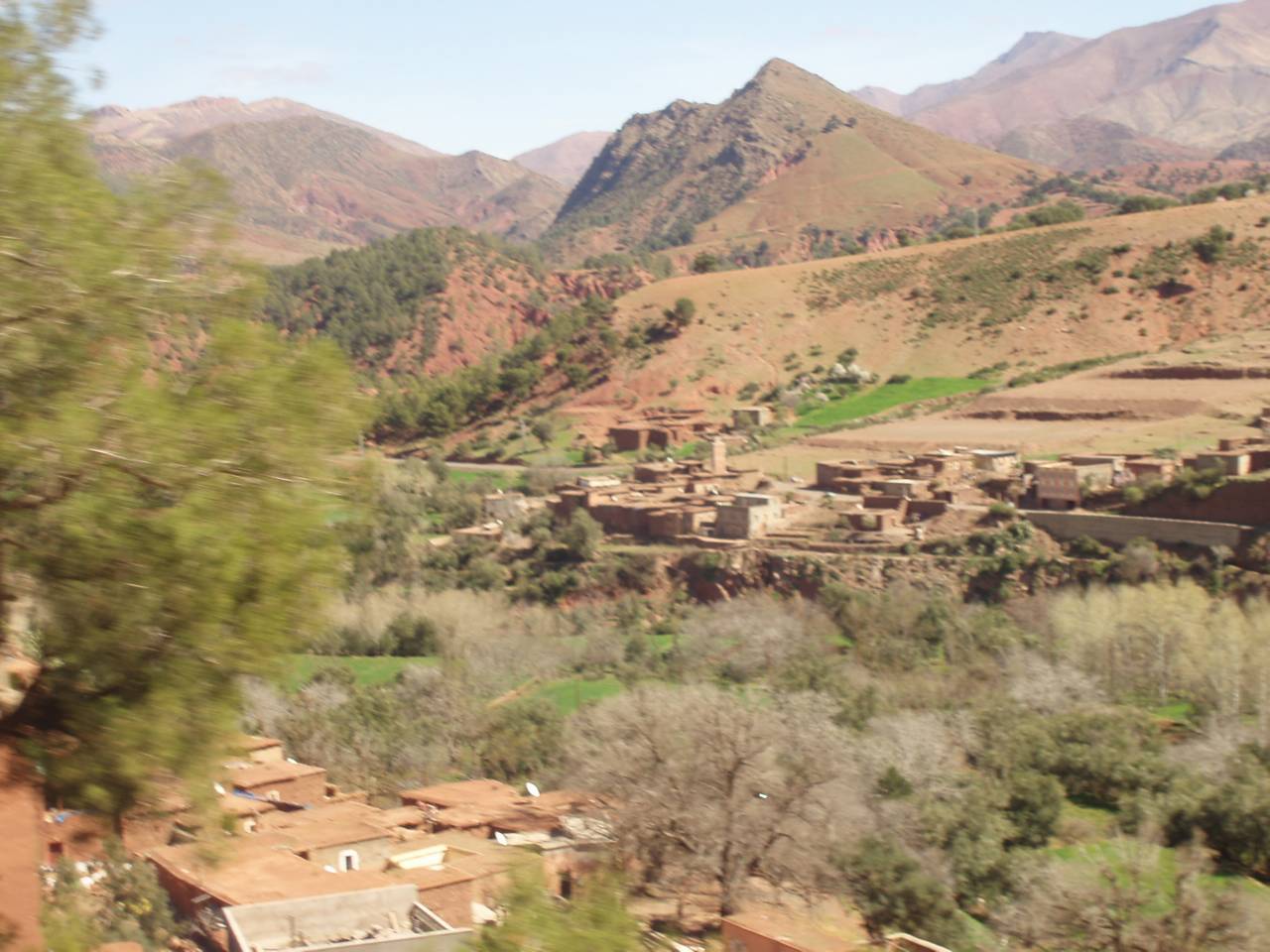

Eventually the driver honks loudly a couple of times and people start turning back. The bumpy ride over the mountains continues. One can clearly see the differences between the Low, Middle and High Atlas without having to see the carpets of the respective tribes. While the Lower Atlas is covered with pine trees, olive trees and grass and a pleasant warmth and spicy smell pamper the senses, the Middle Atlas is much harder.
There was a lot of gravel along the side of the road and not many villages left. Every now and then you see a few huts in the vicinity of which children are tending a handful of goats. A flat, milky mountain stream runs along the road, with thousands of flowers stretching out of the scree along its banks, while the few trees here are still completely bare from winter.
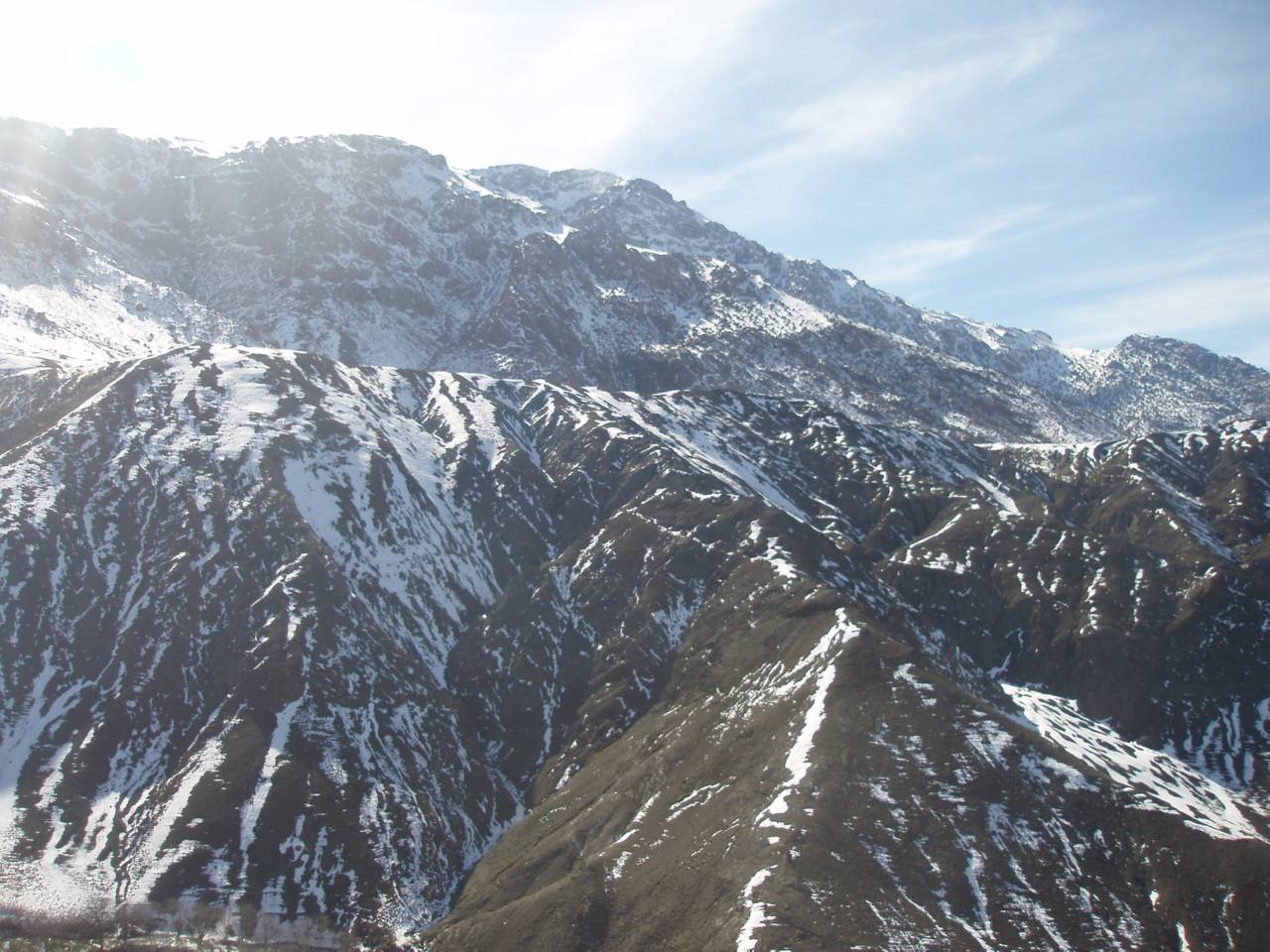
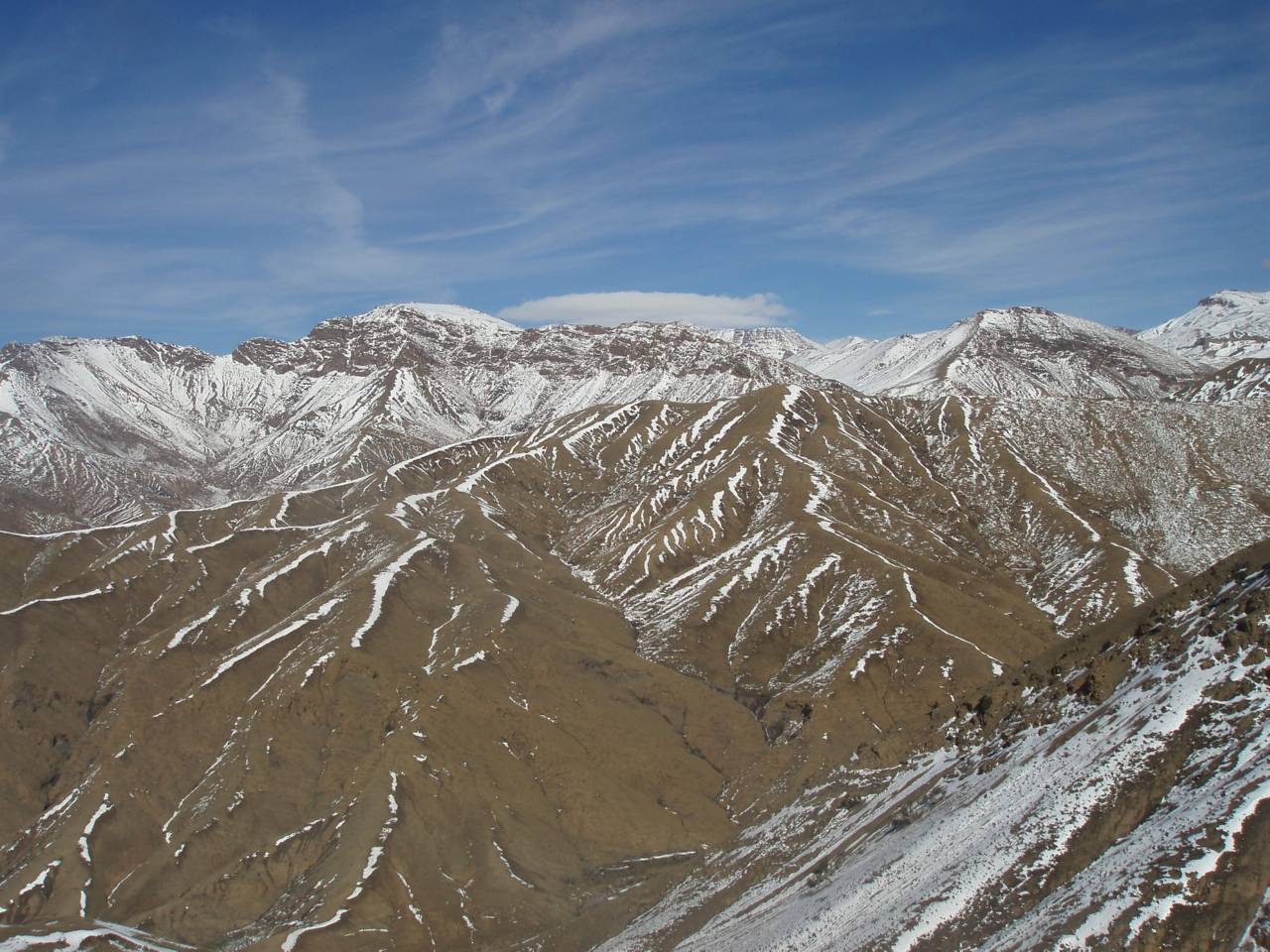

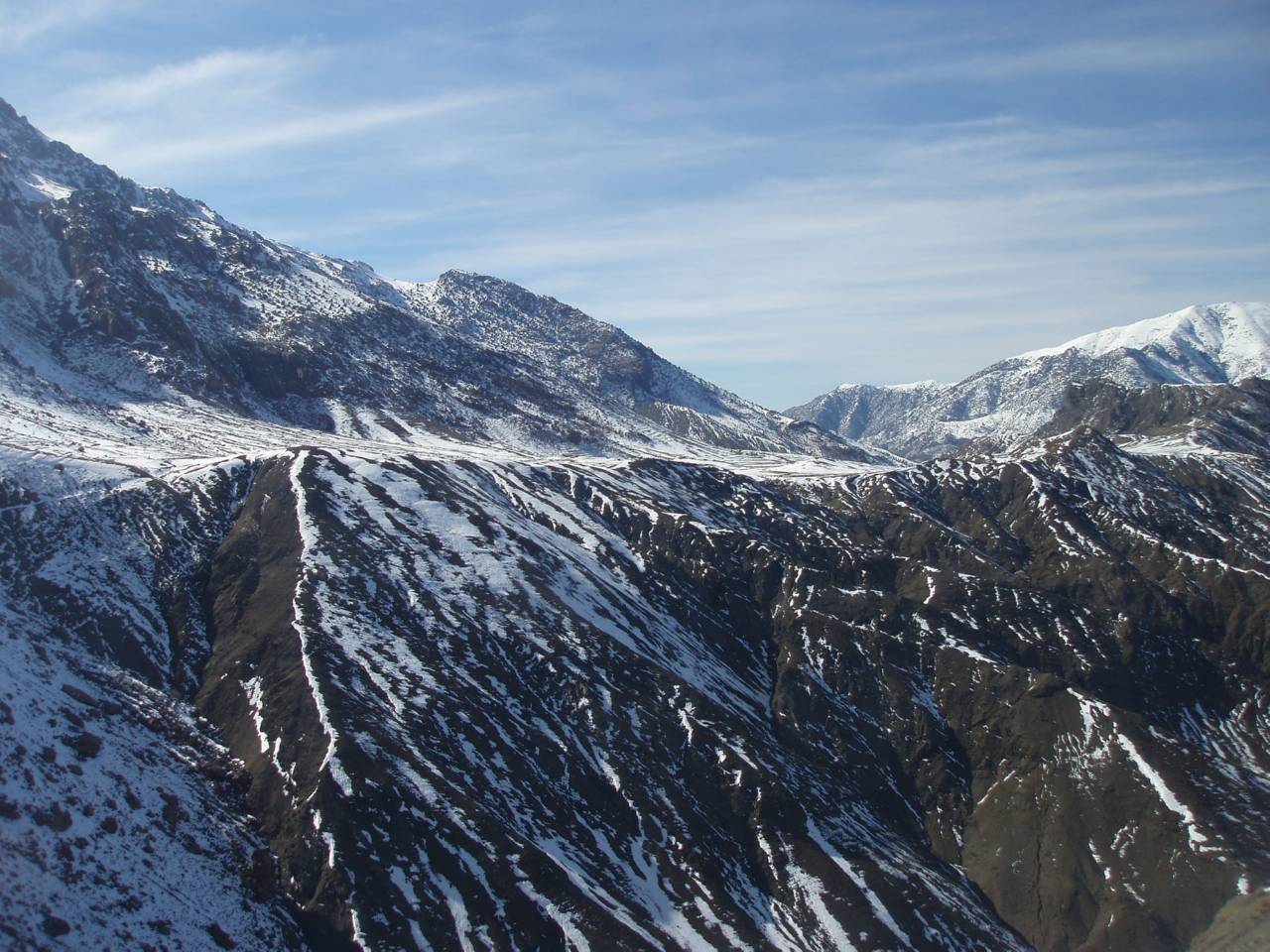


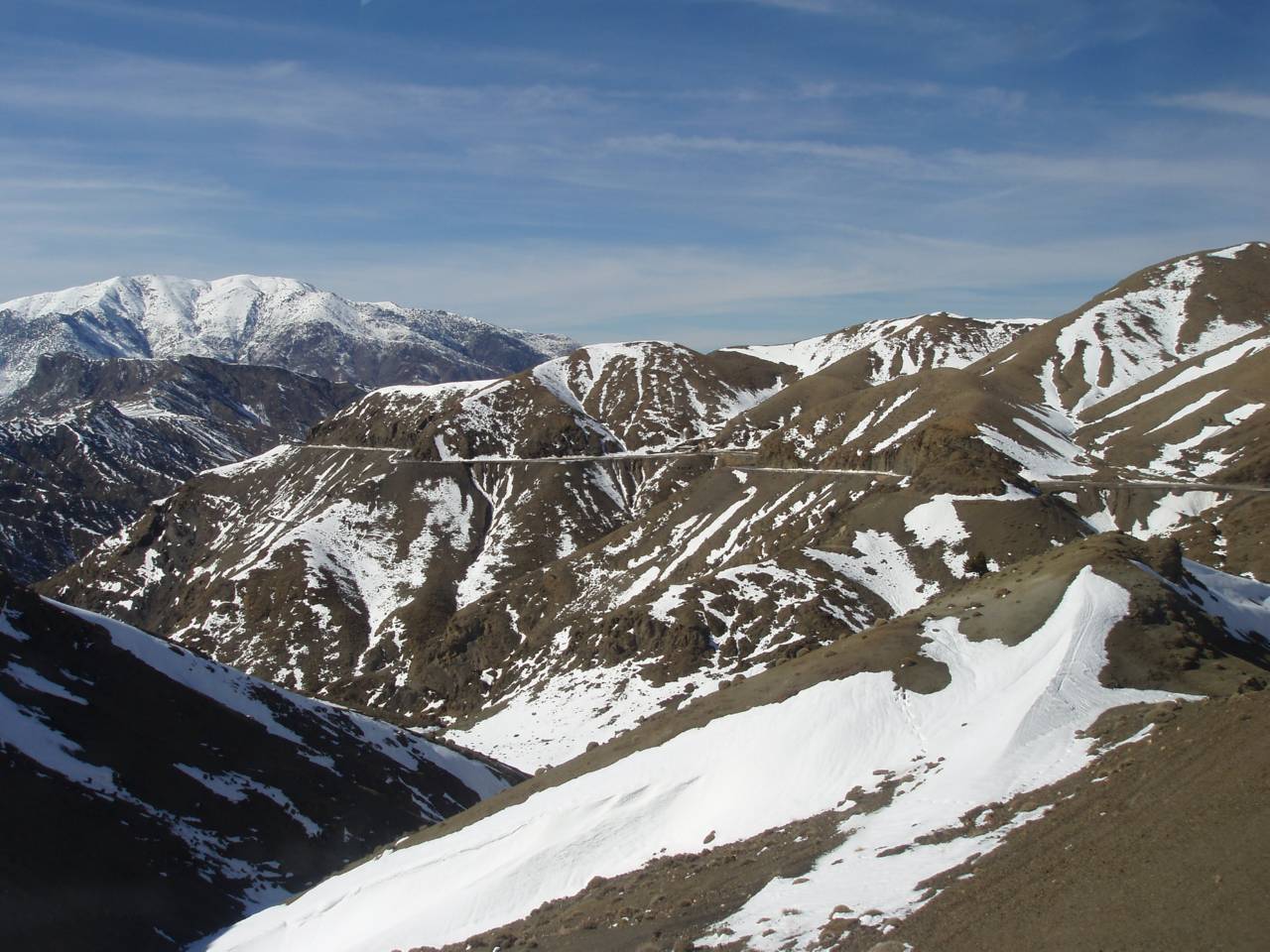
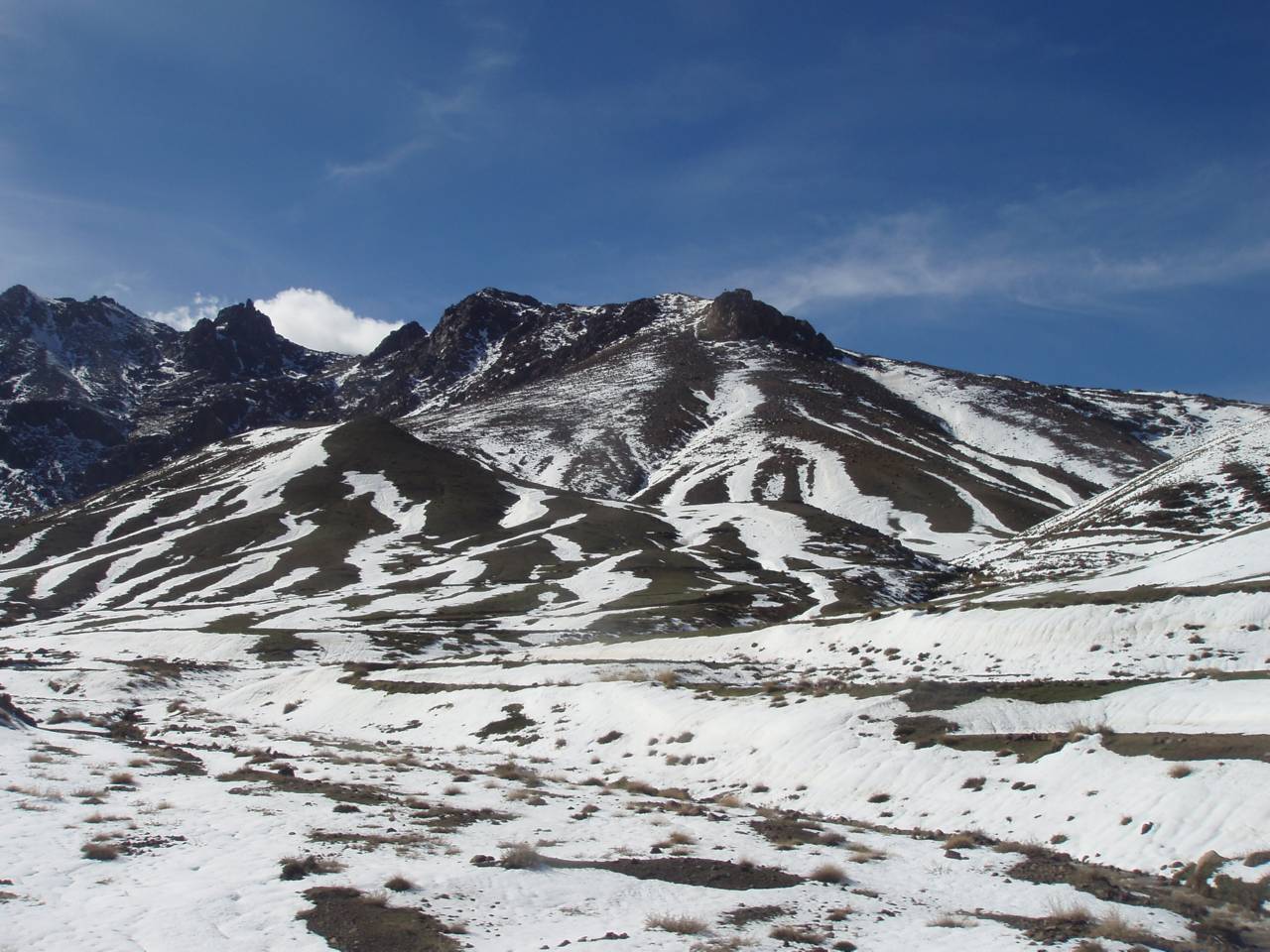
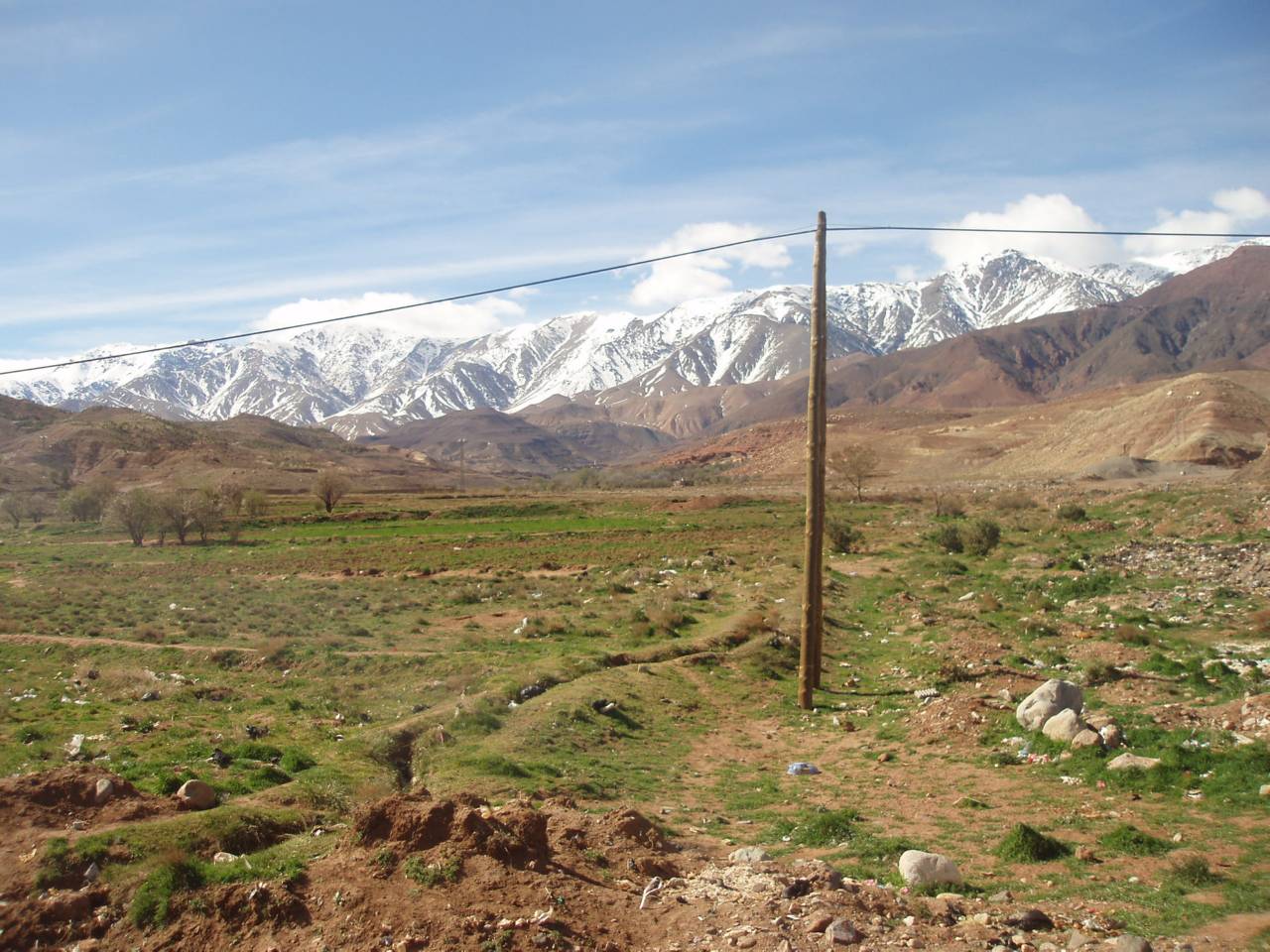
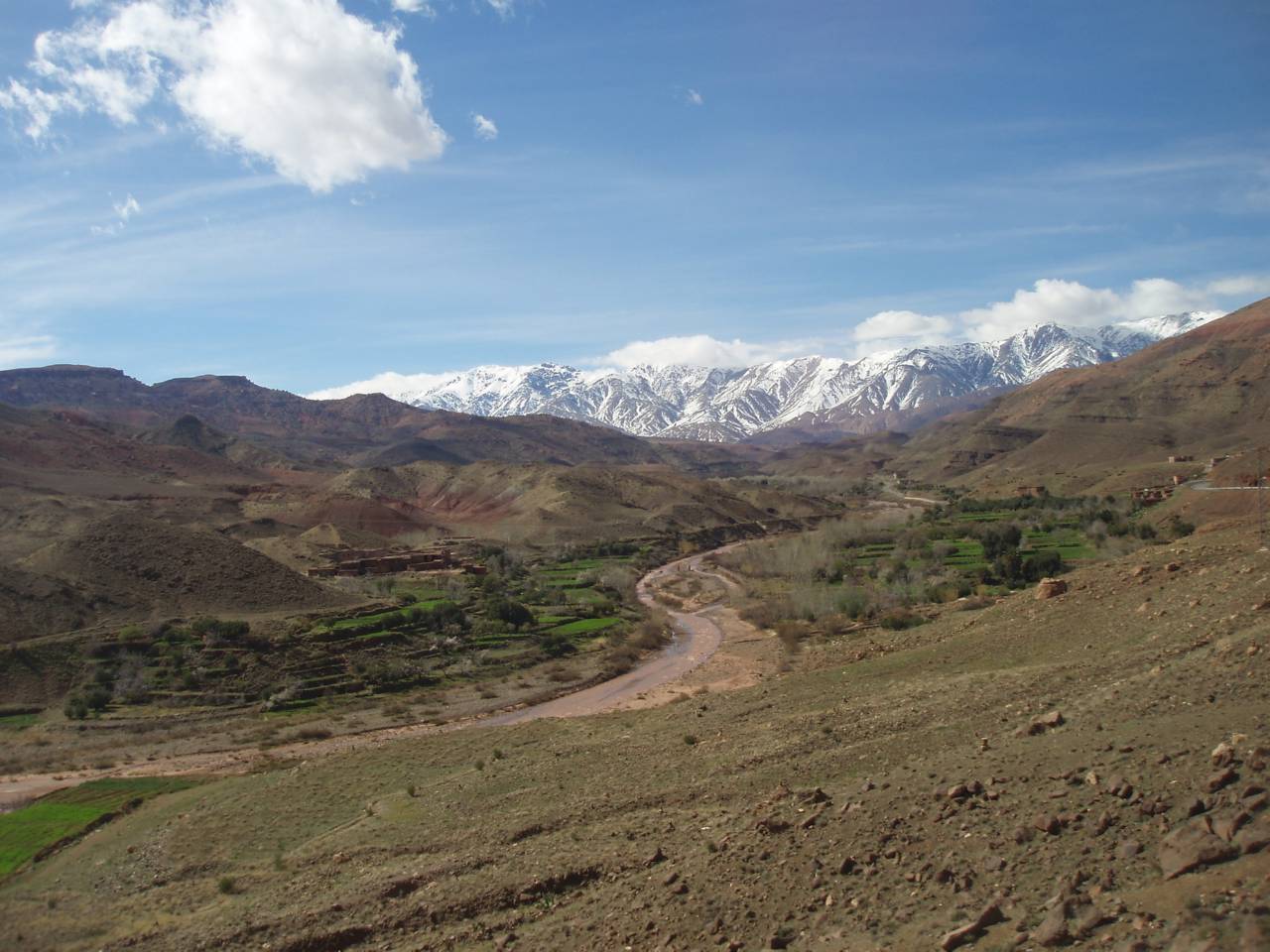


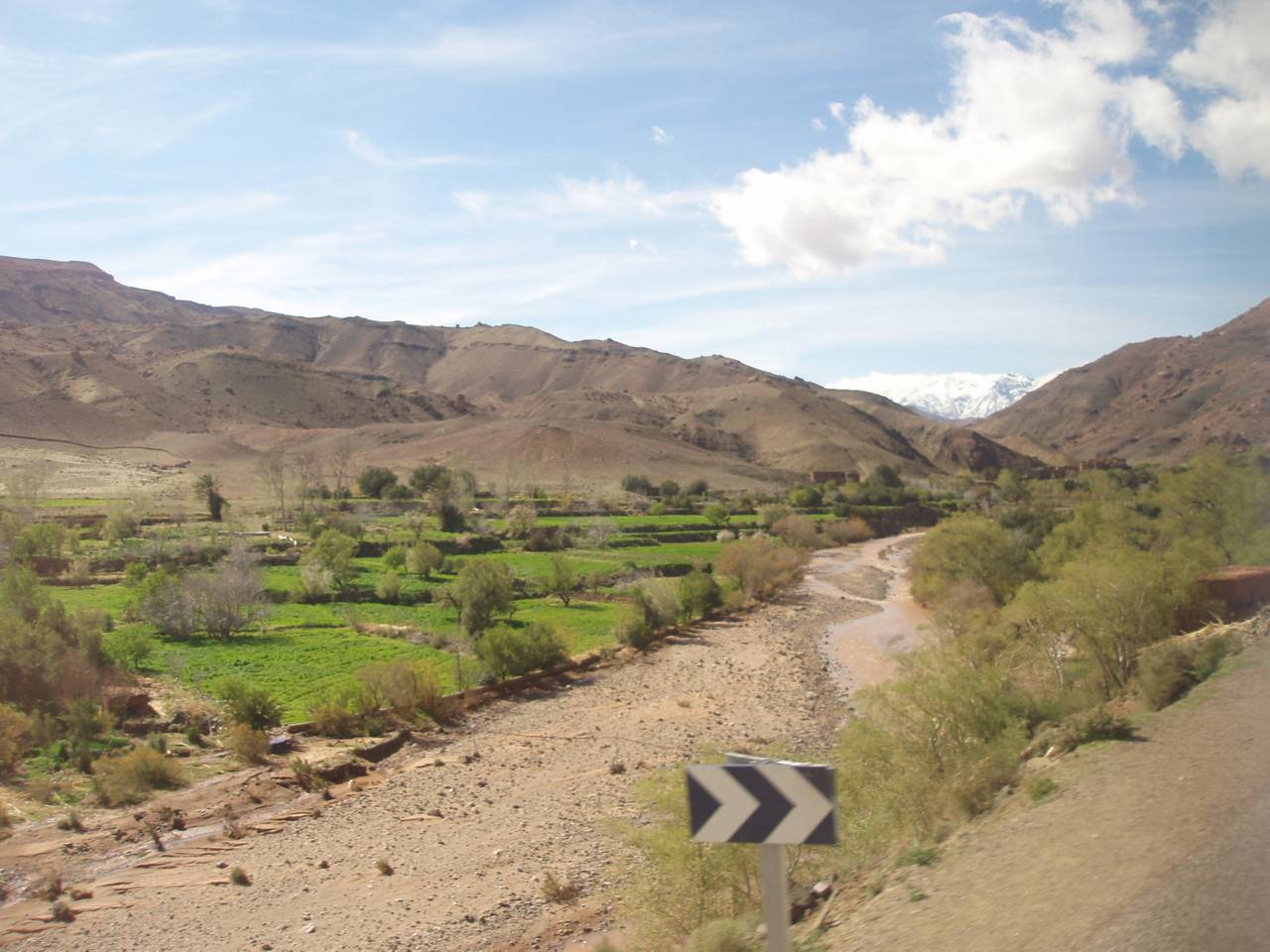
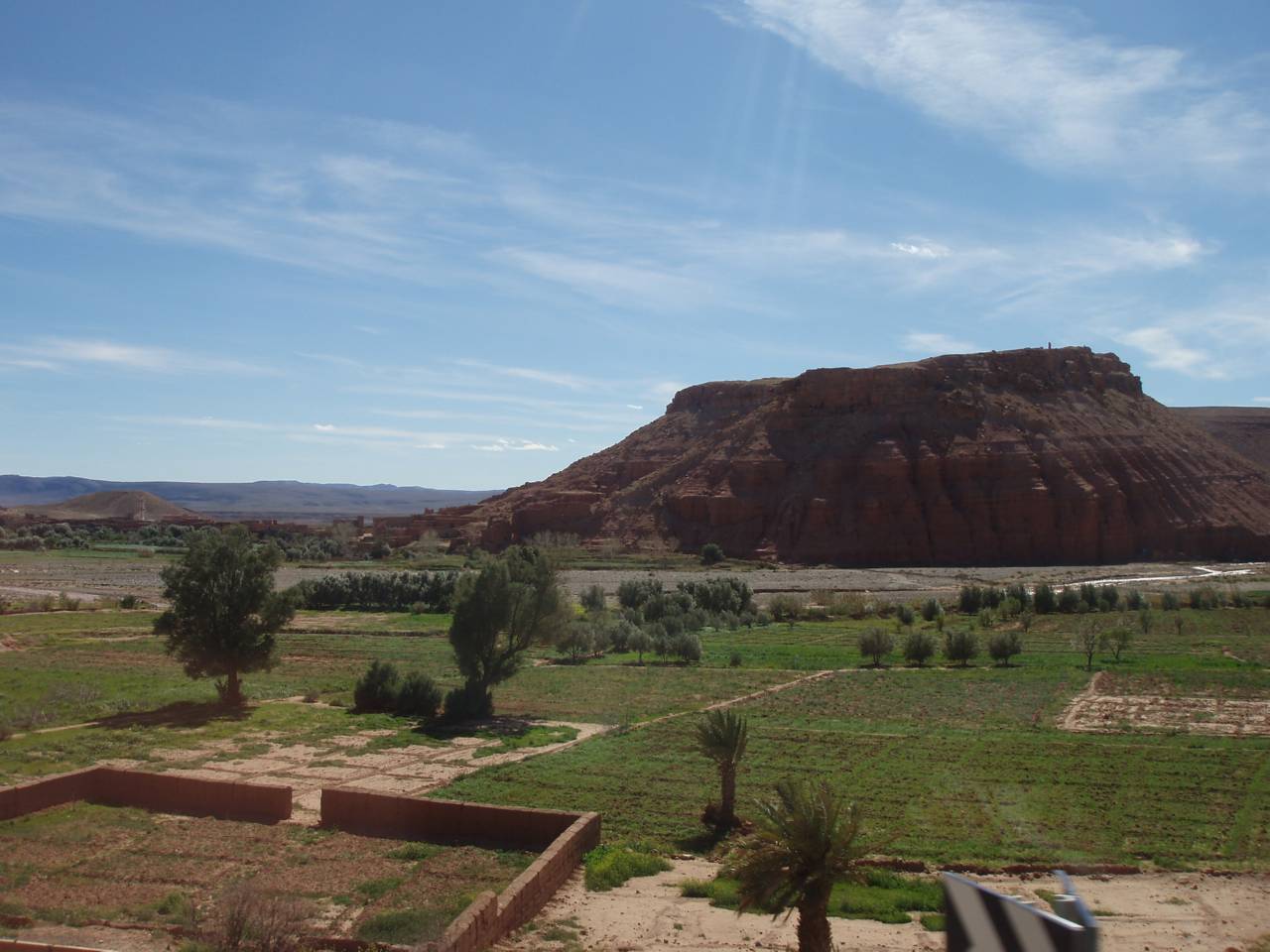
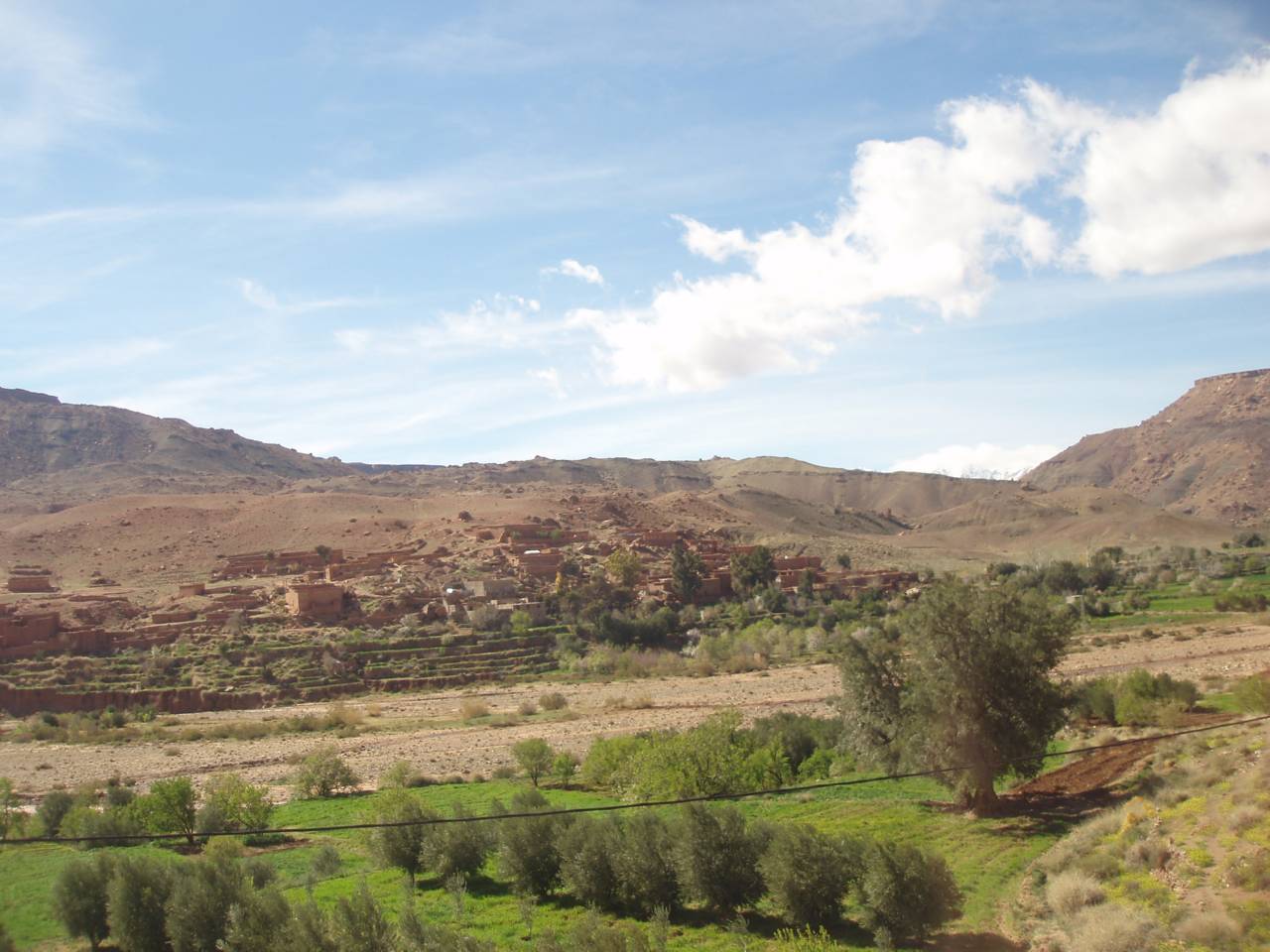
We screw our way up the serpentines to a pass at 2500 meters. There is still a lot of snow on the mountains around us, but the pass is clear and surprisingly warm. From here one has a view of the western Atlas and the lowlands beyond, on the one hand, and to the east, on the other hand, where, after a few mountain ranges and the land of the Drâa River, the desert is said to begin.
From the High Atlas to the desert – From Snow to Sand
After we have screwed down the mountains to some extent, the landscape changes in that we now drive through large valley basins that are lined with high and steep plateaus, between which there are larger settlements and old kasbahs. However, we never see many people.
At some point we also leave the valley basin and drive into the open country.
Theoretically one can already speak of a desert here, because the land is flat, full of boulders and all you can see to the horizon is flat land with boulders, which is swept by a heavy brown wind laden with sand.
We reach Ouarzazate and we curve through wide but deserted streets. We finally reach the bus station, where there is a hectic rush again at the exit and in front of the luggage. I make three signs of the cross when I find my backpack intact. We are a bit disoriented at first, but a young man immediately approached us, slipped us the card of a hotel and offered to take us there. He seems really friendly to me, but out of caution – and by now a habit – we politely decline in order to go exploring ourselves.
